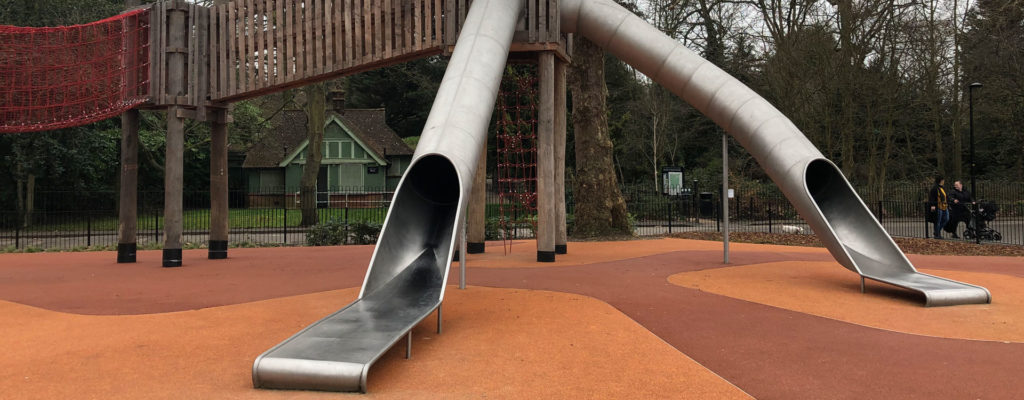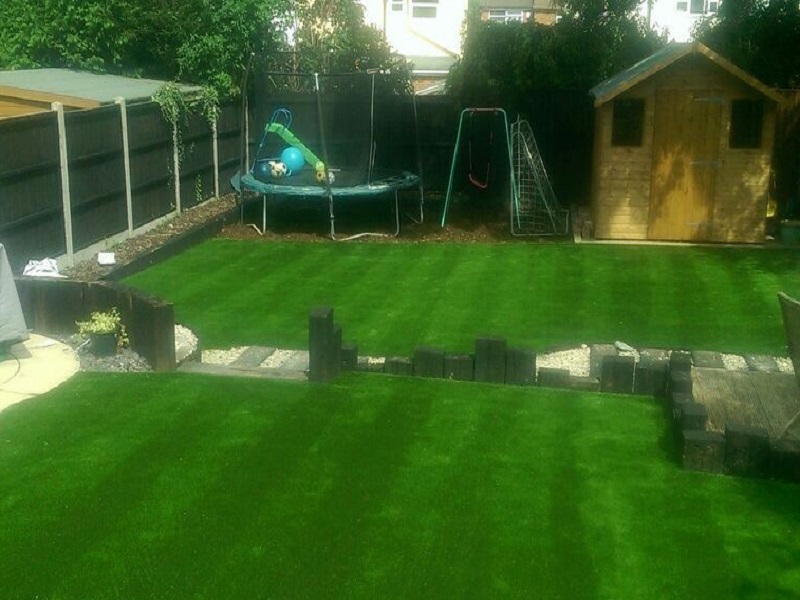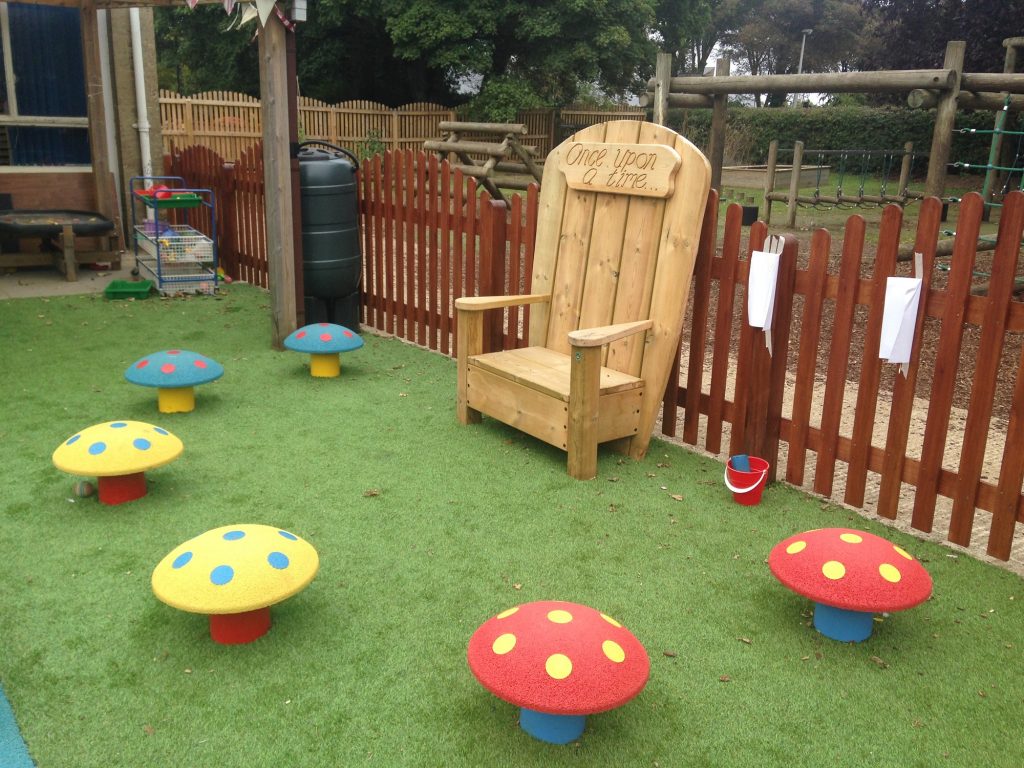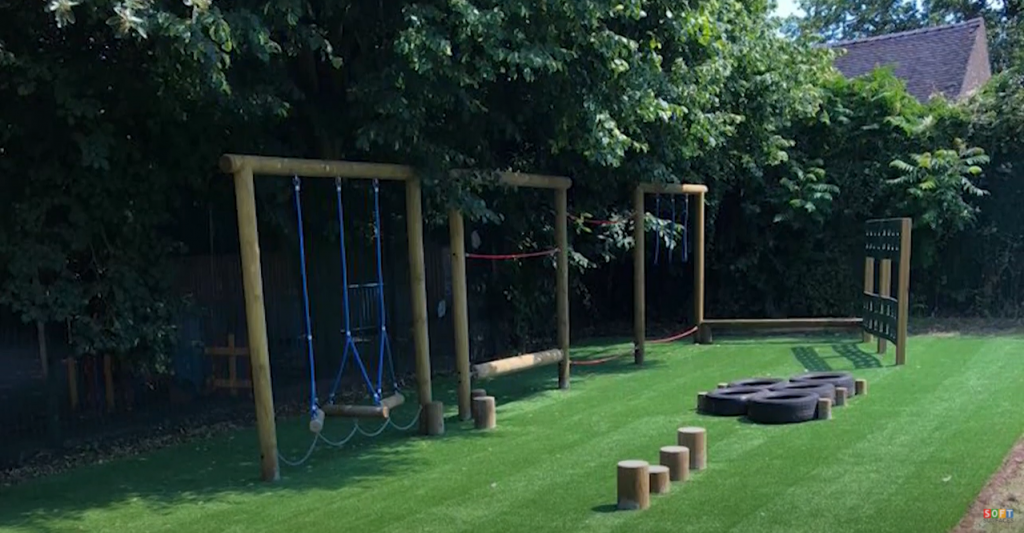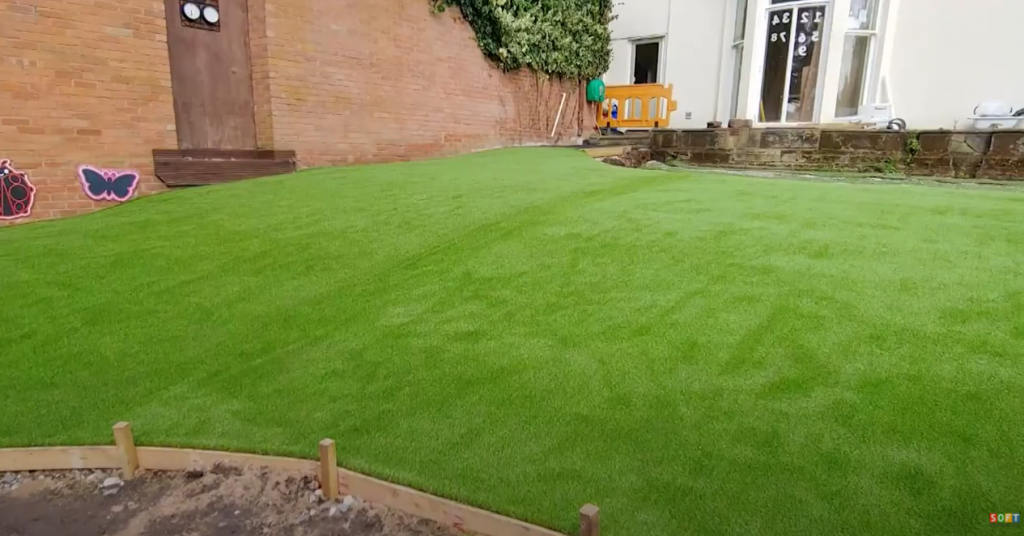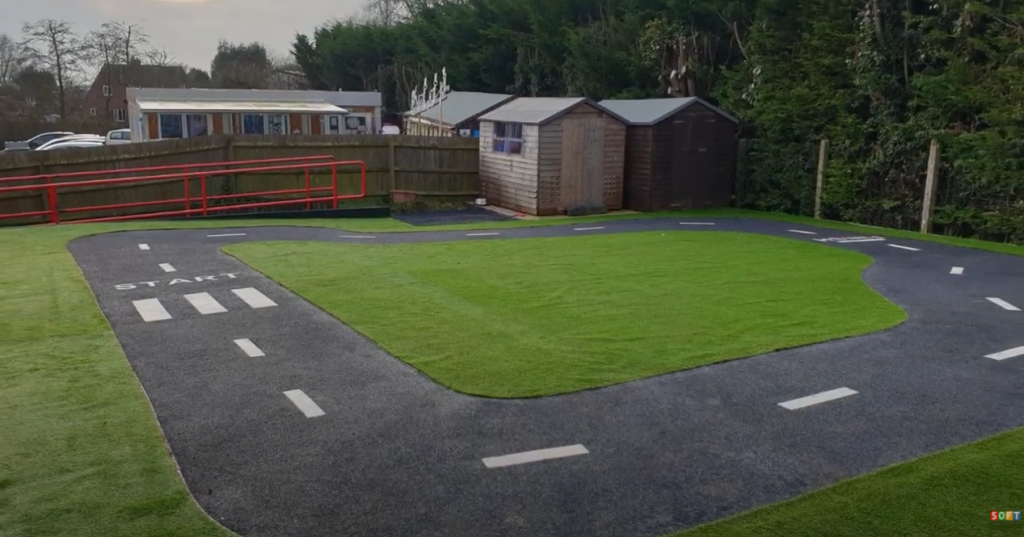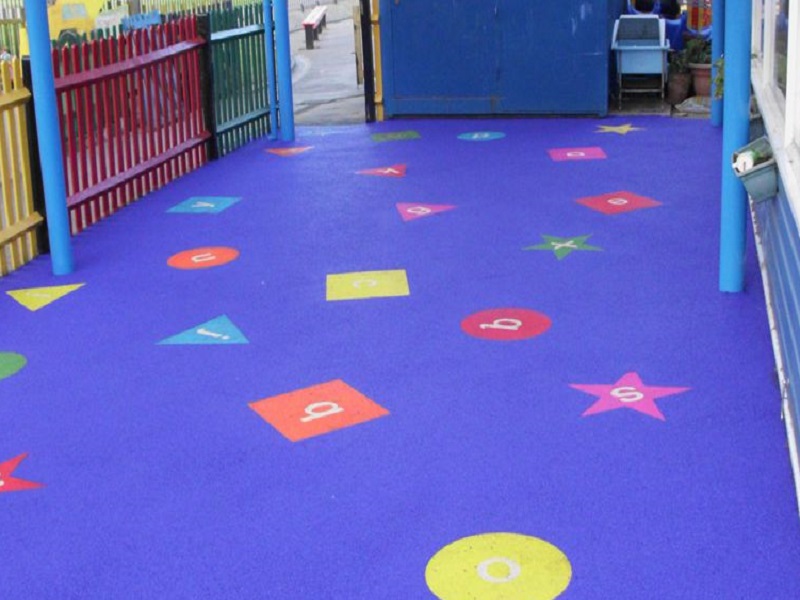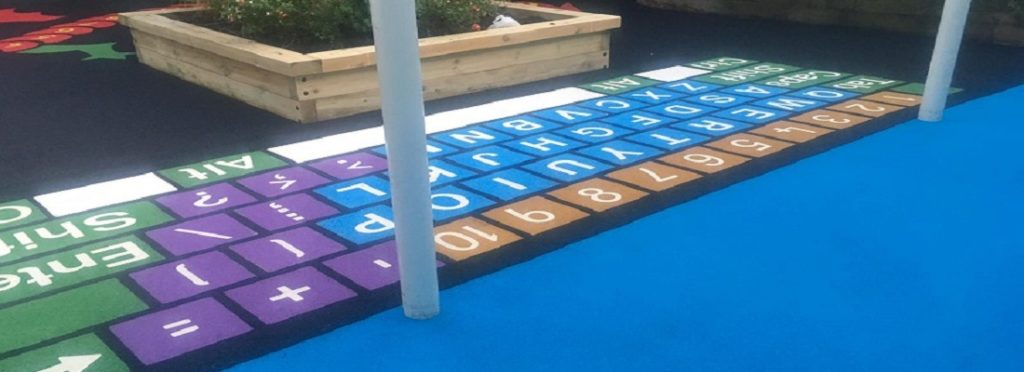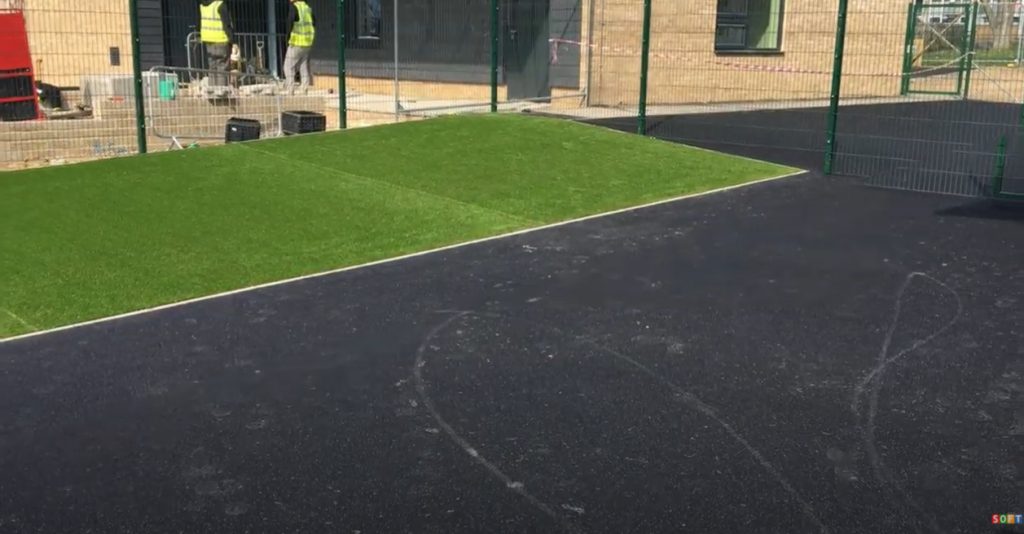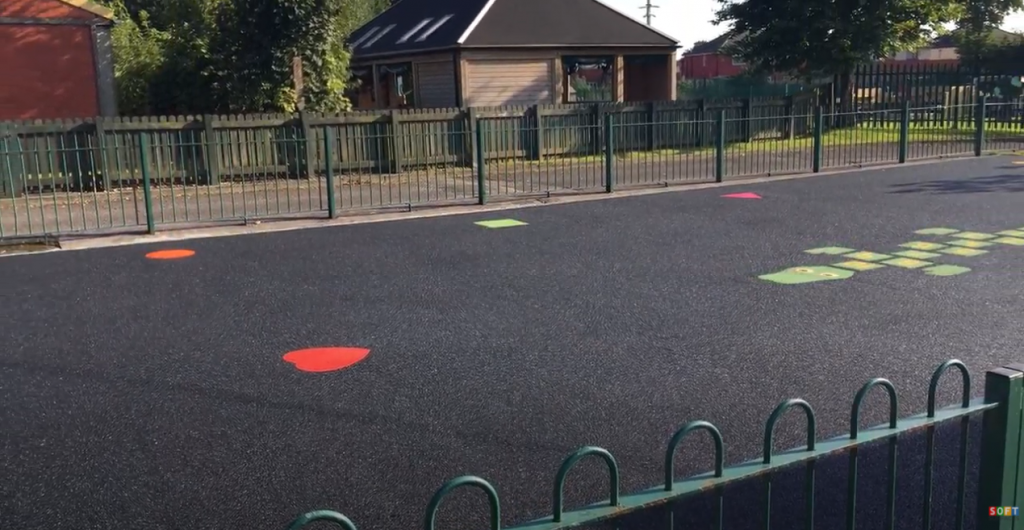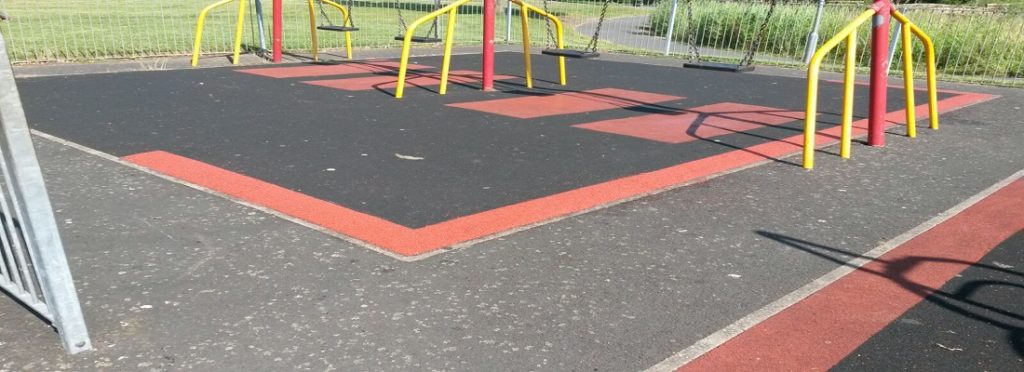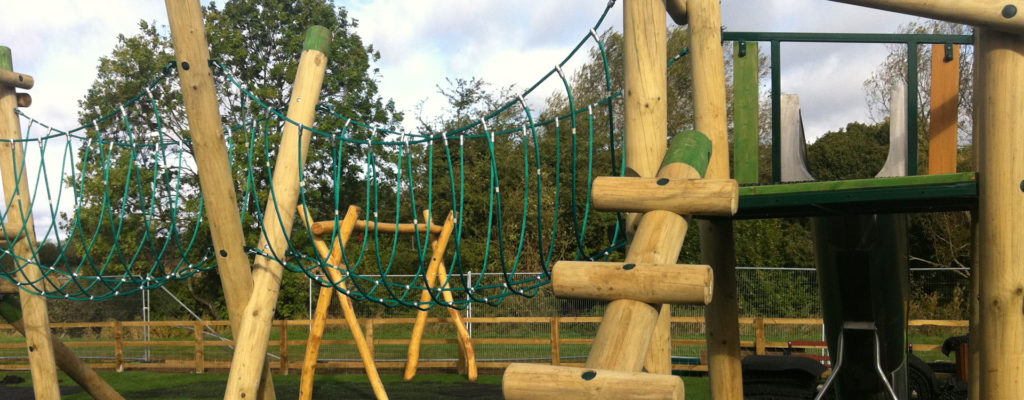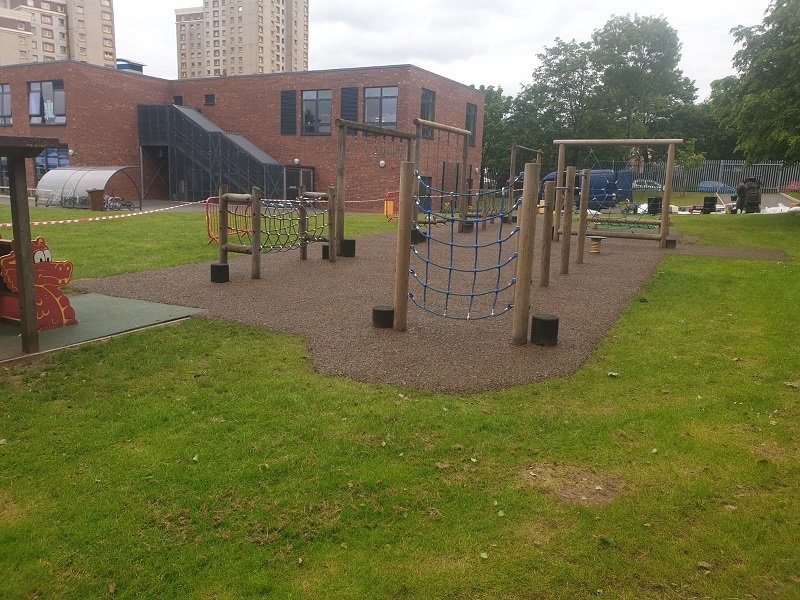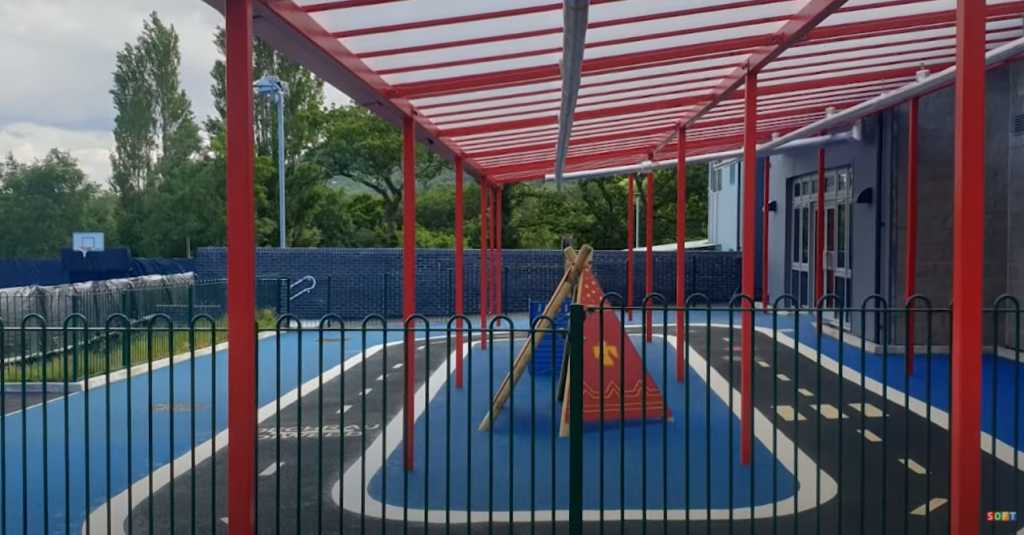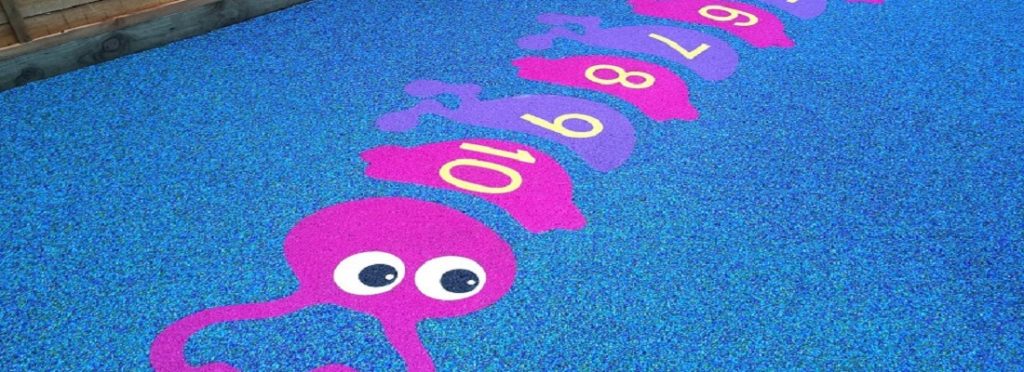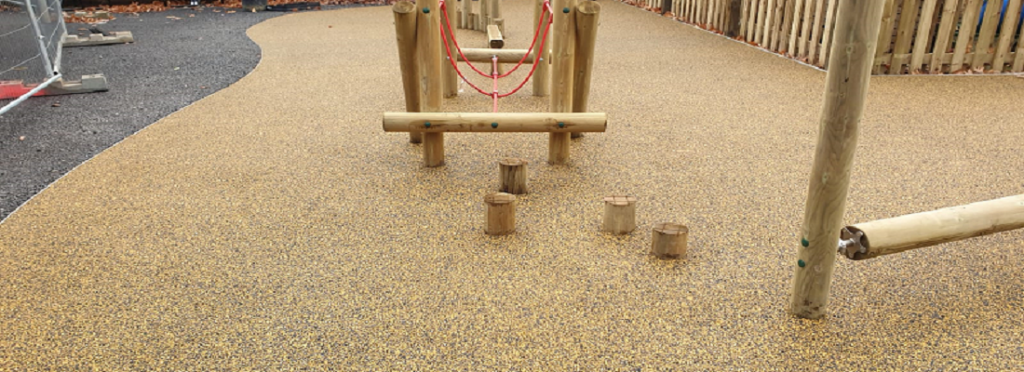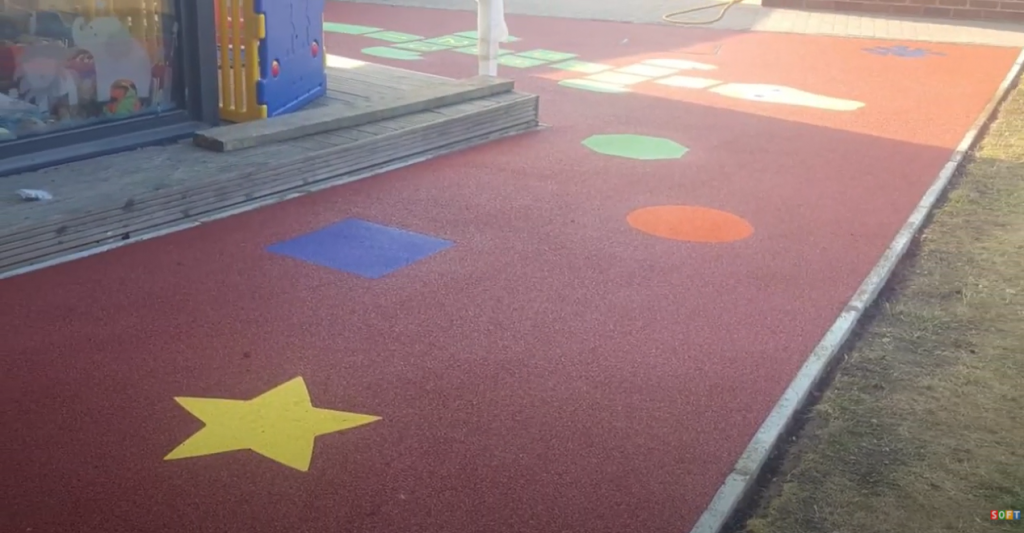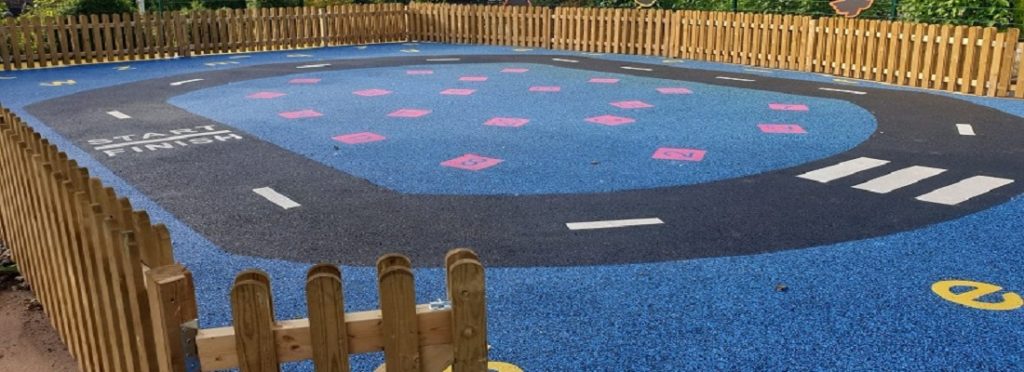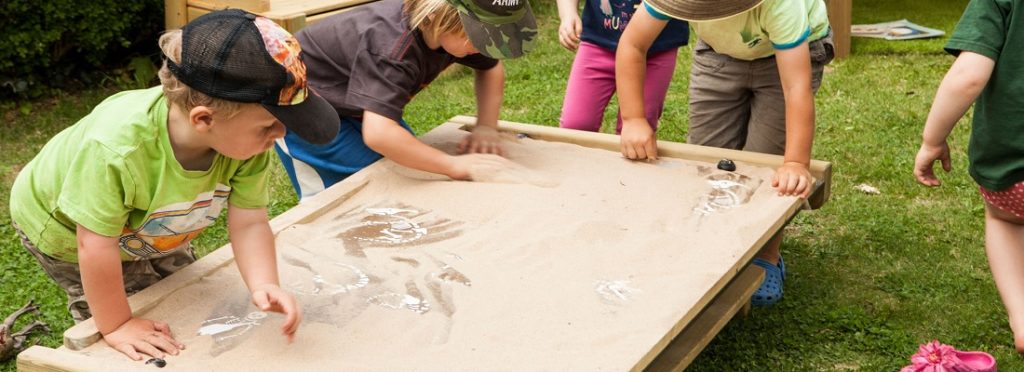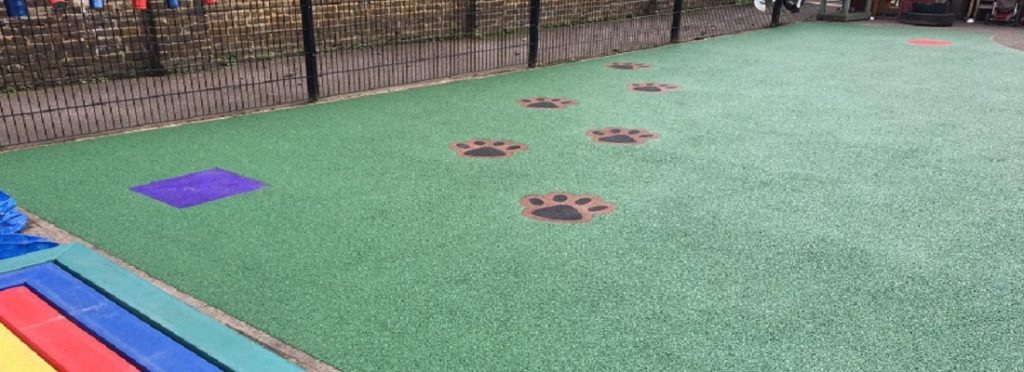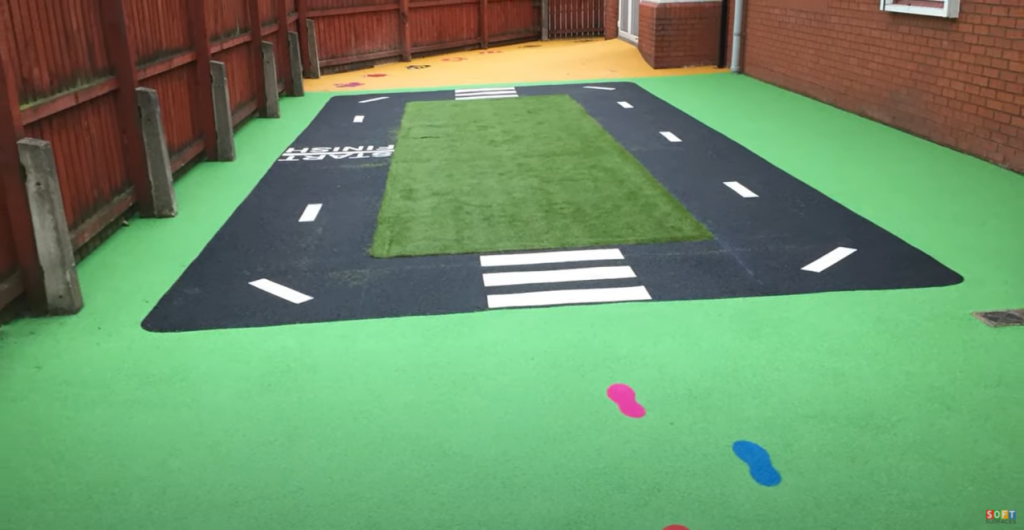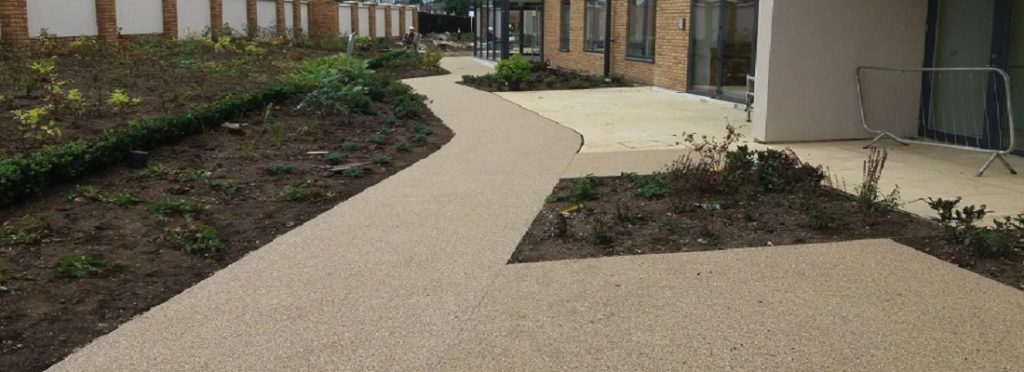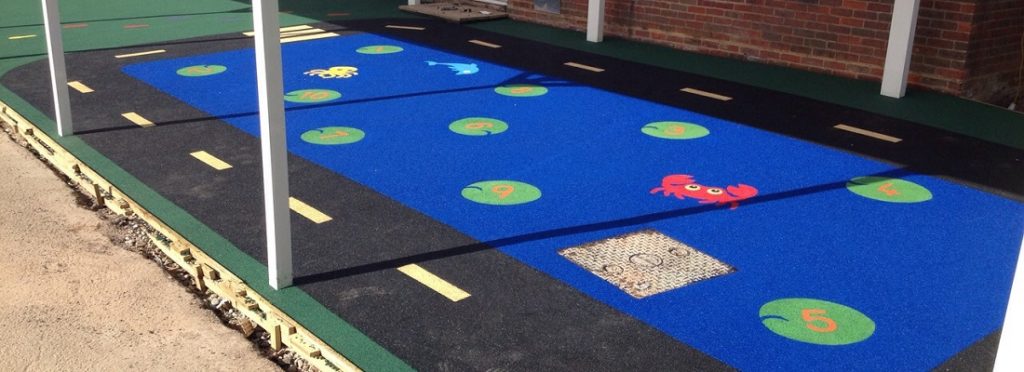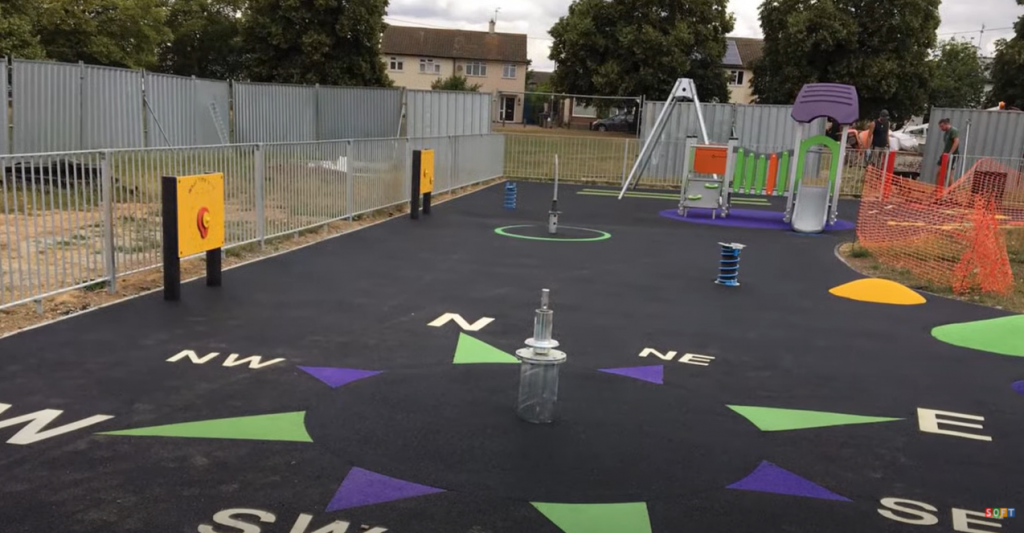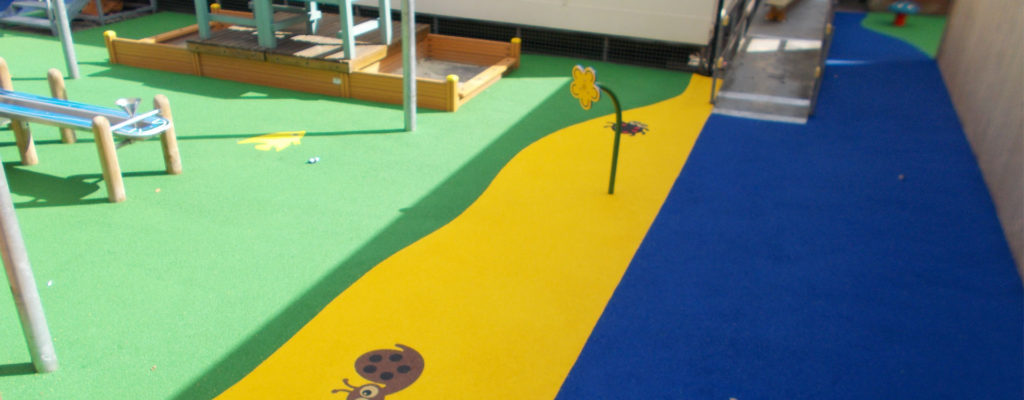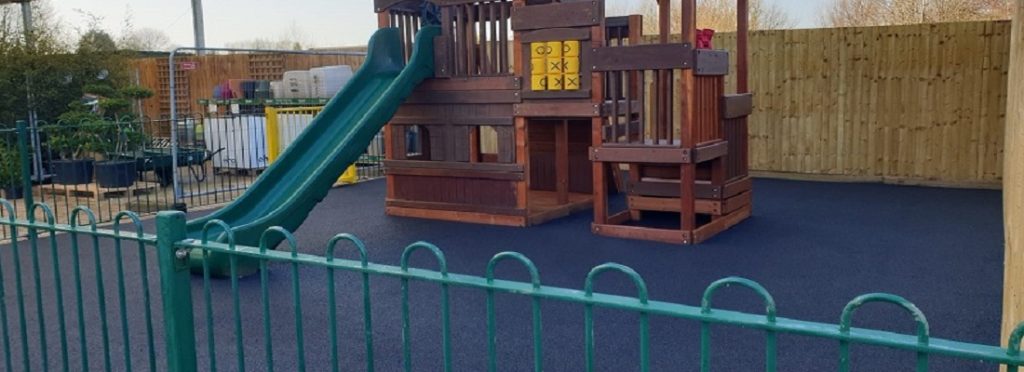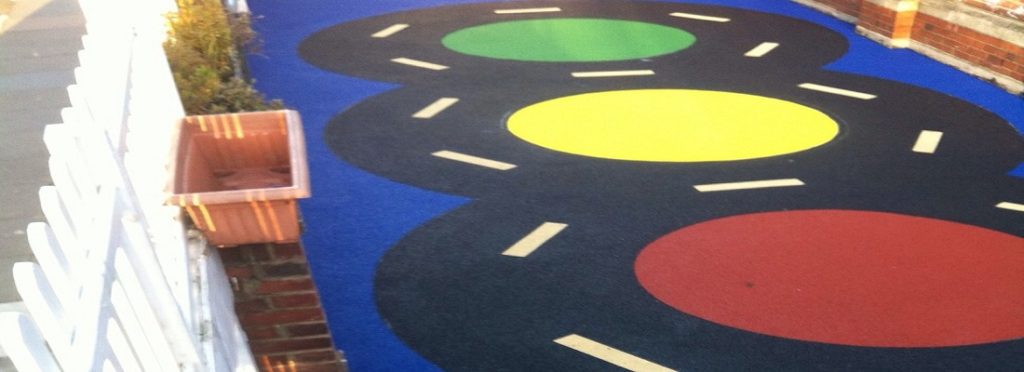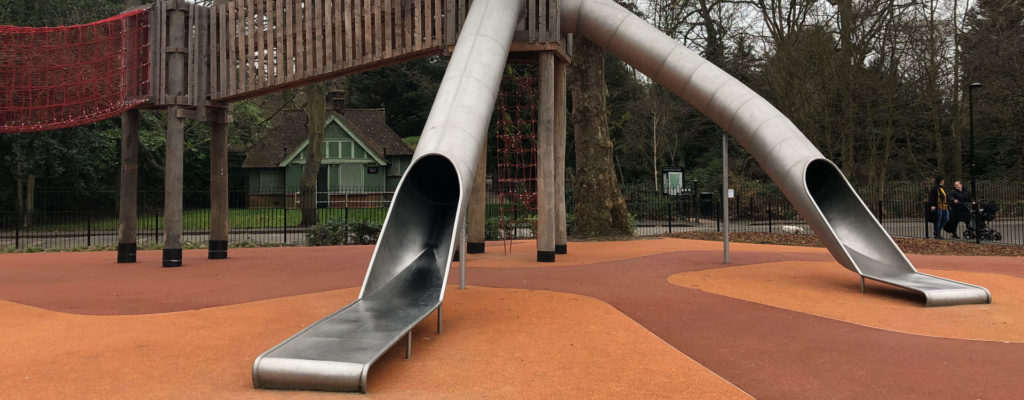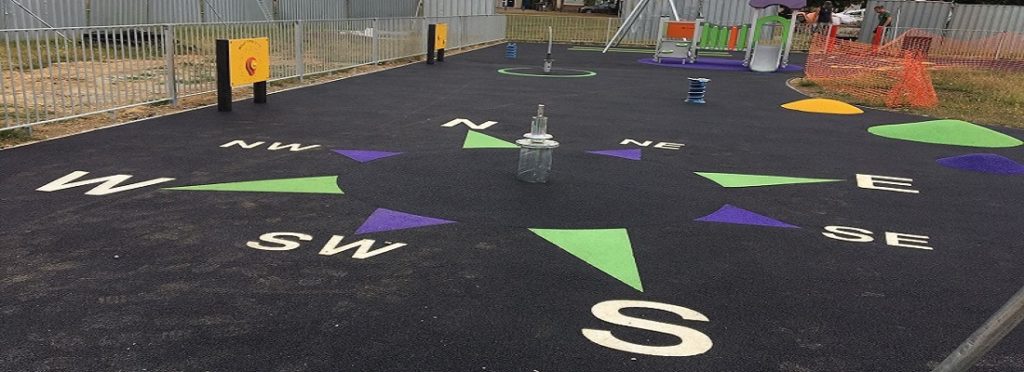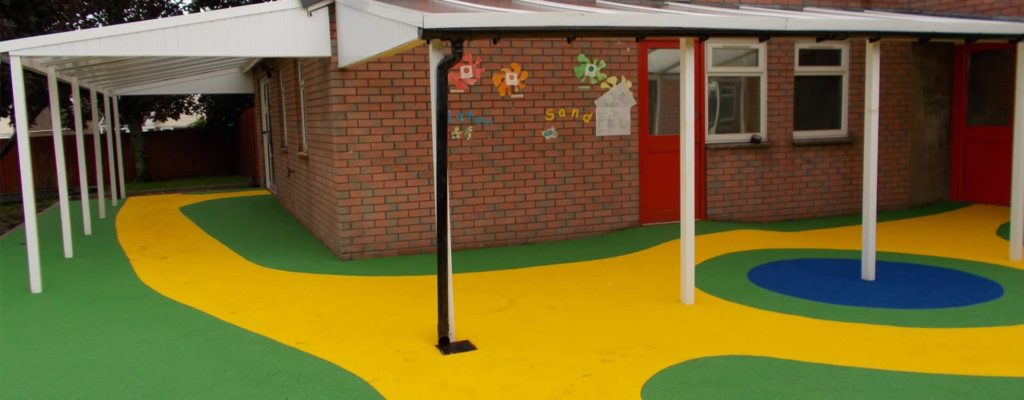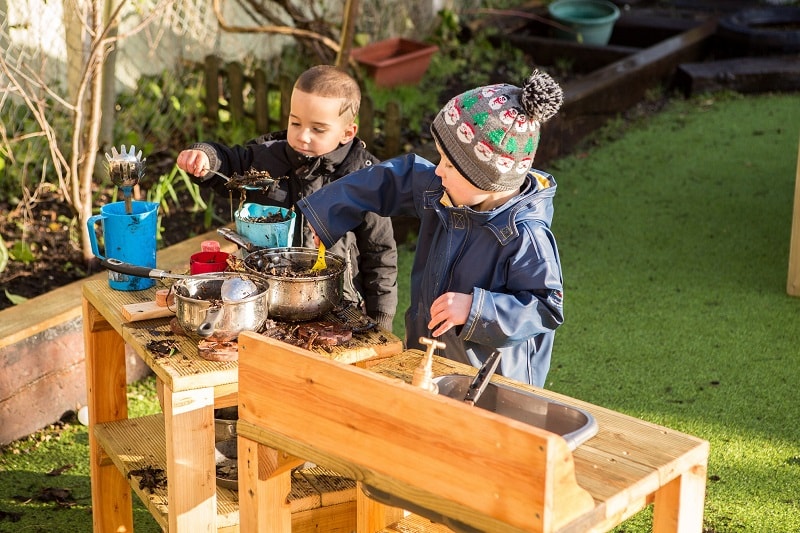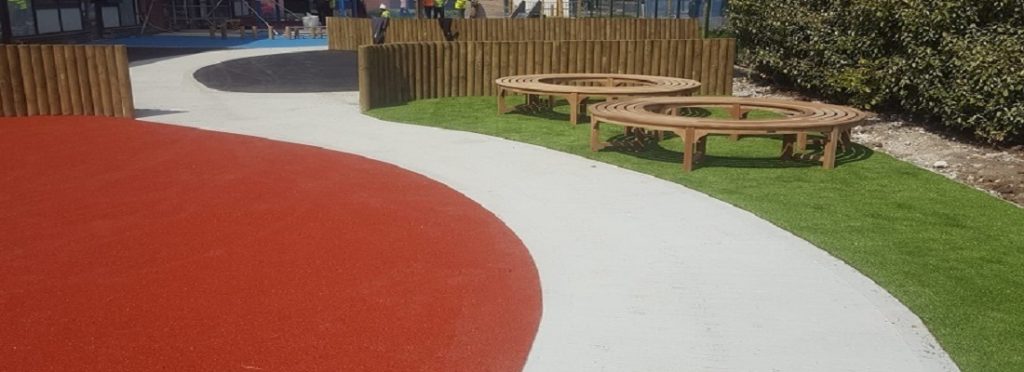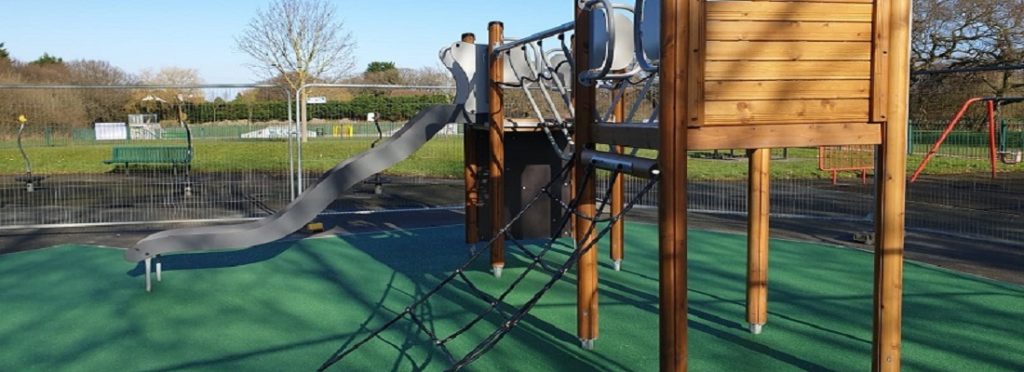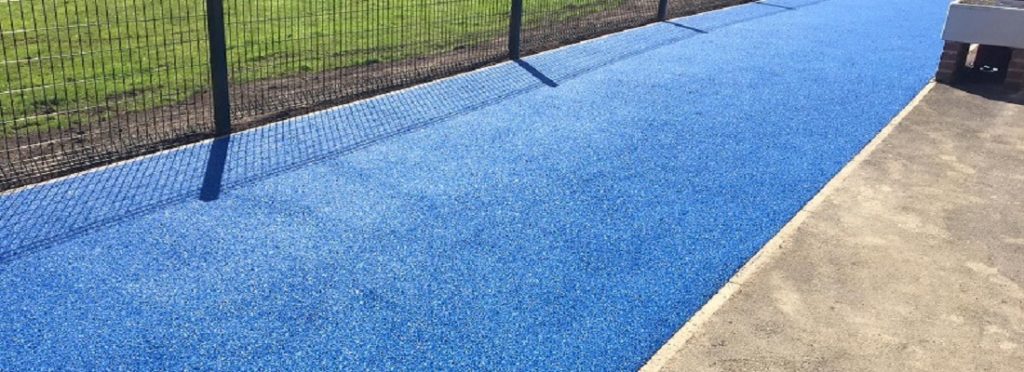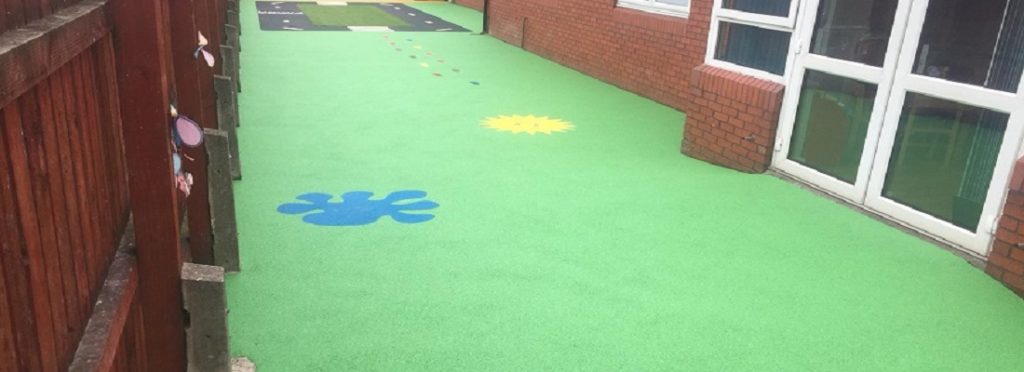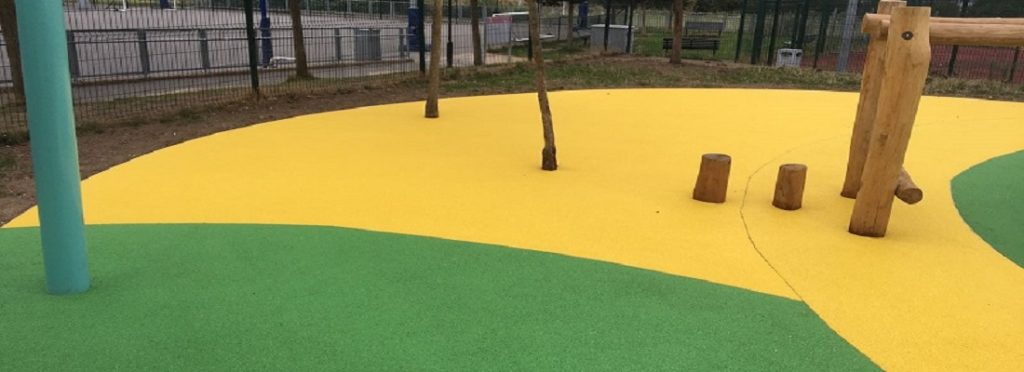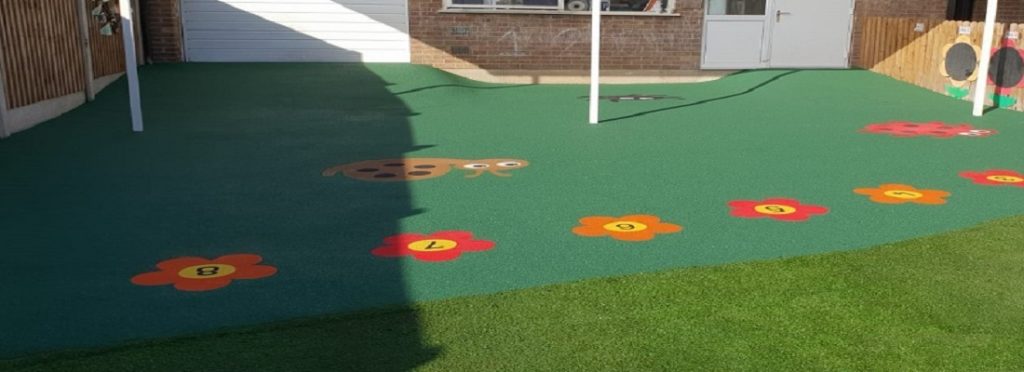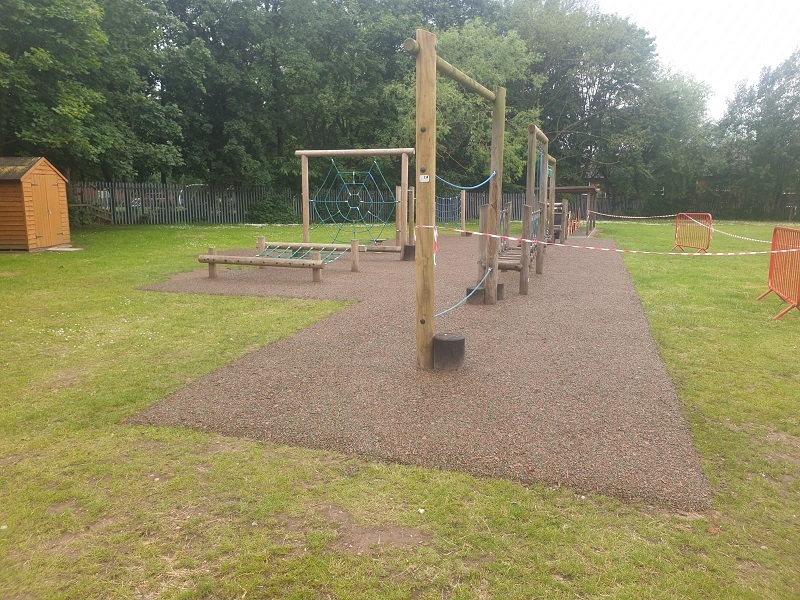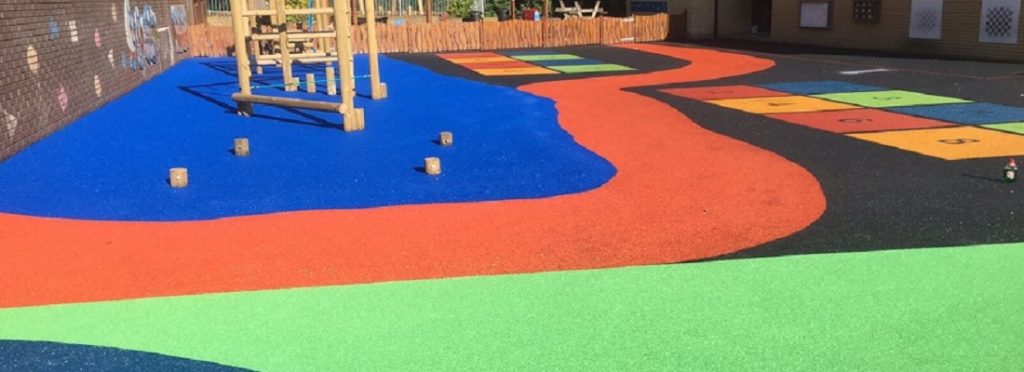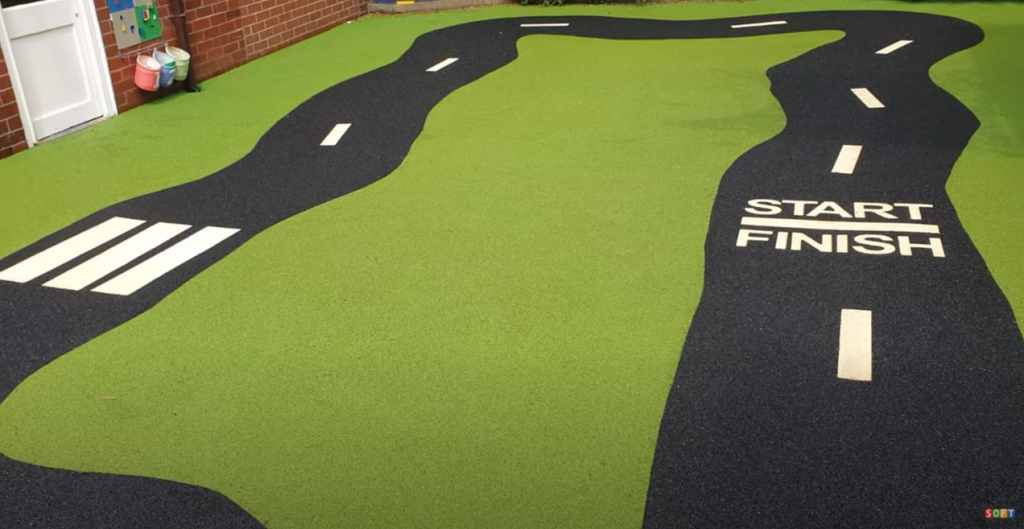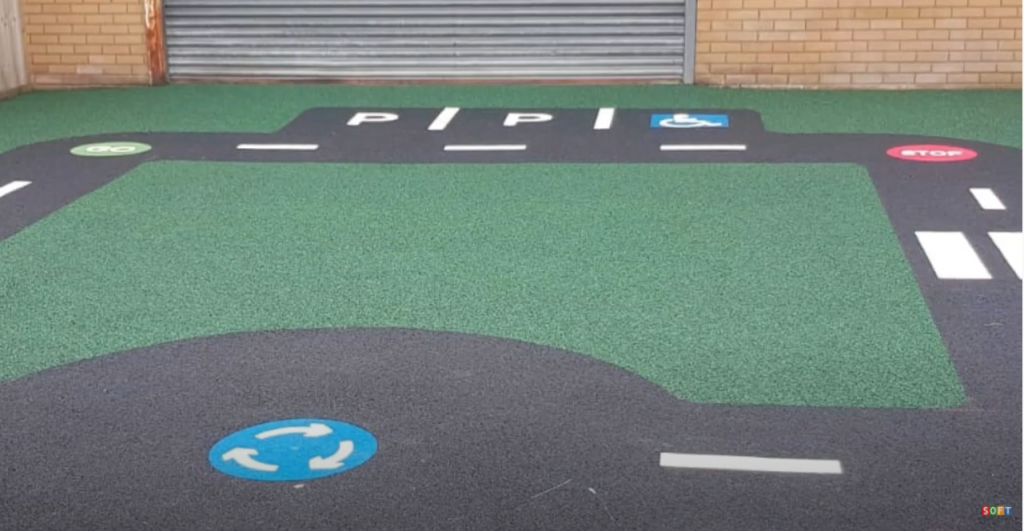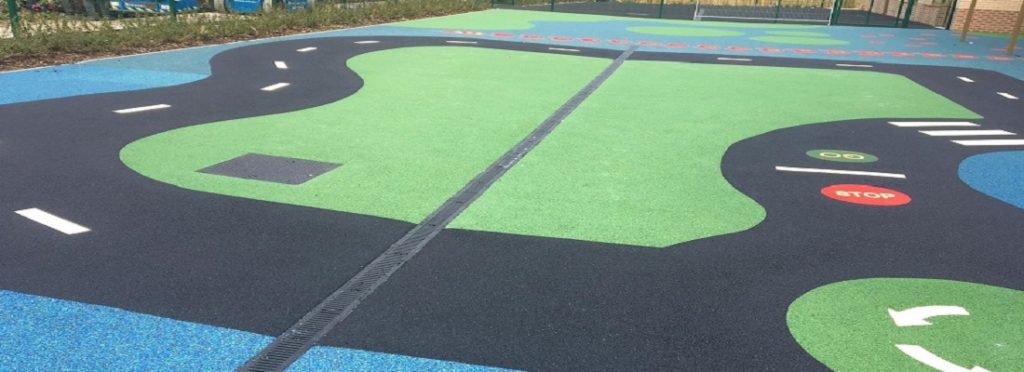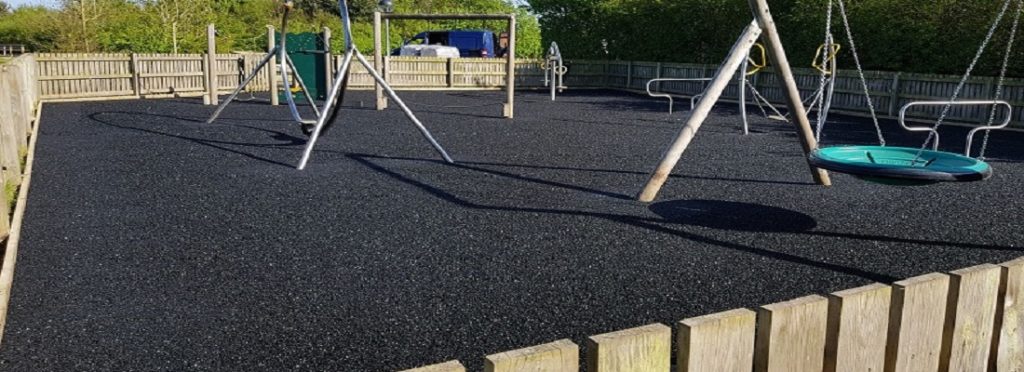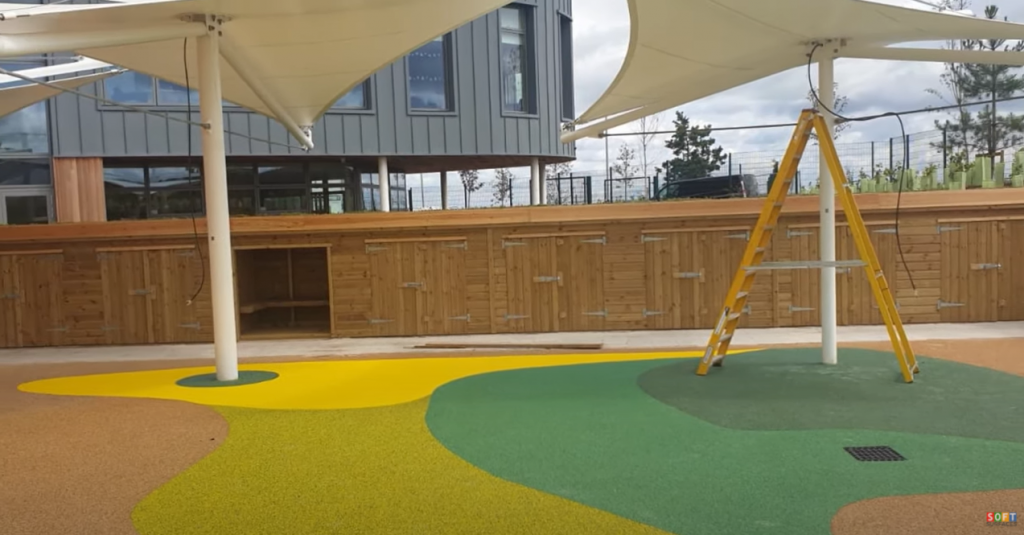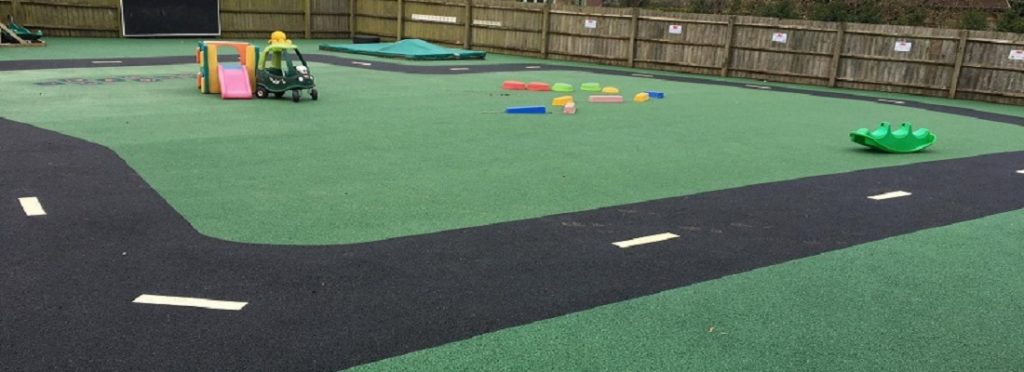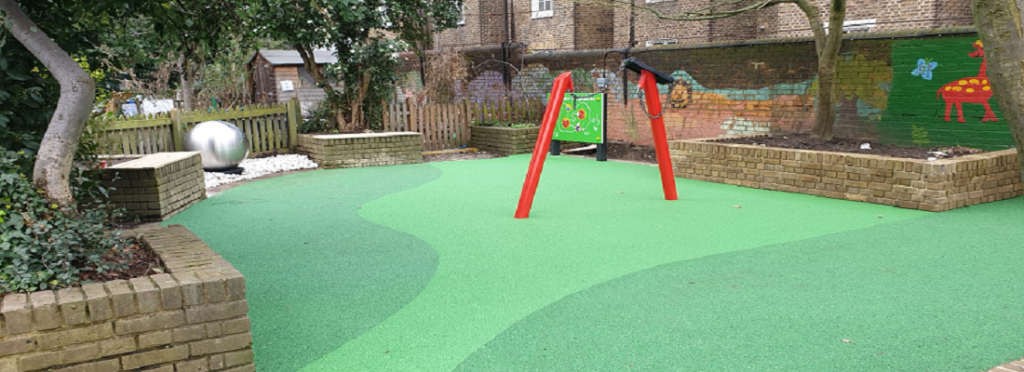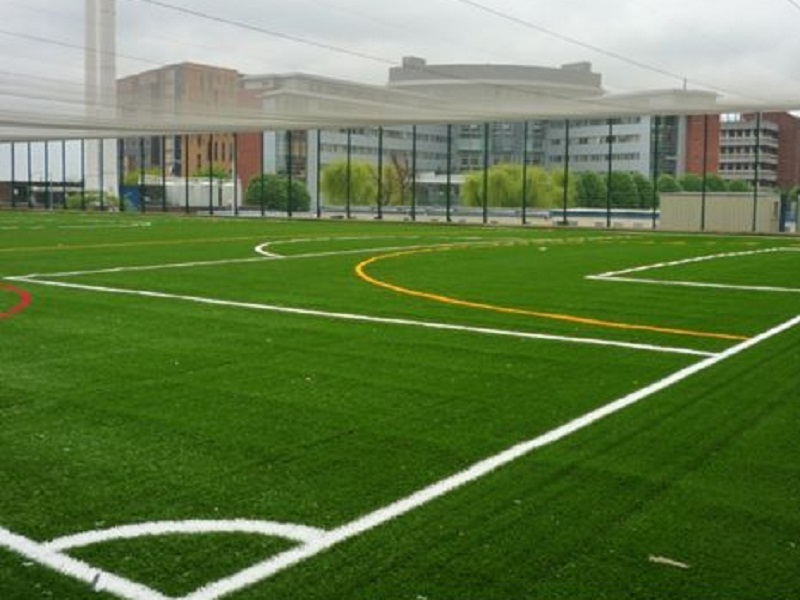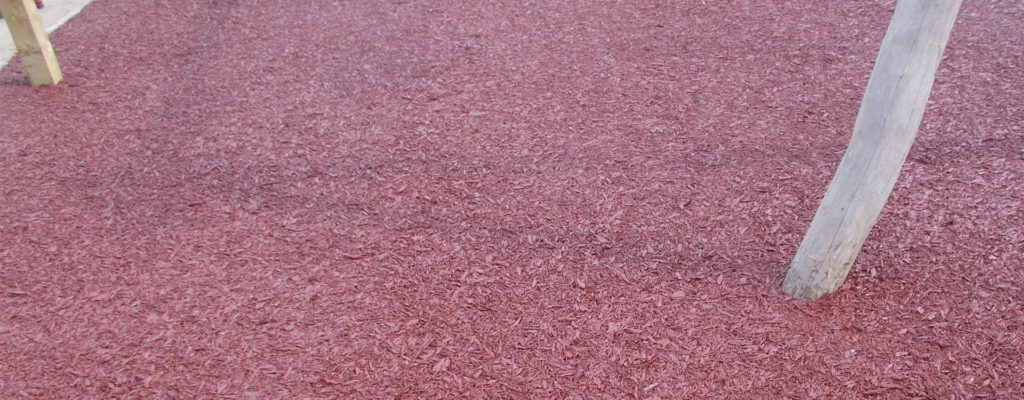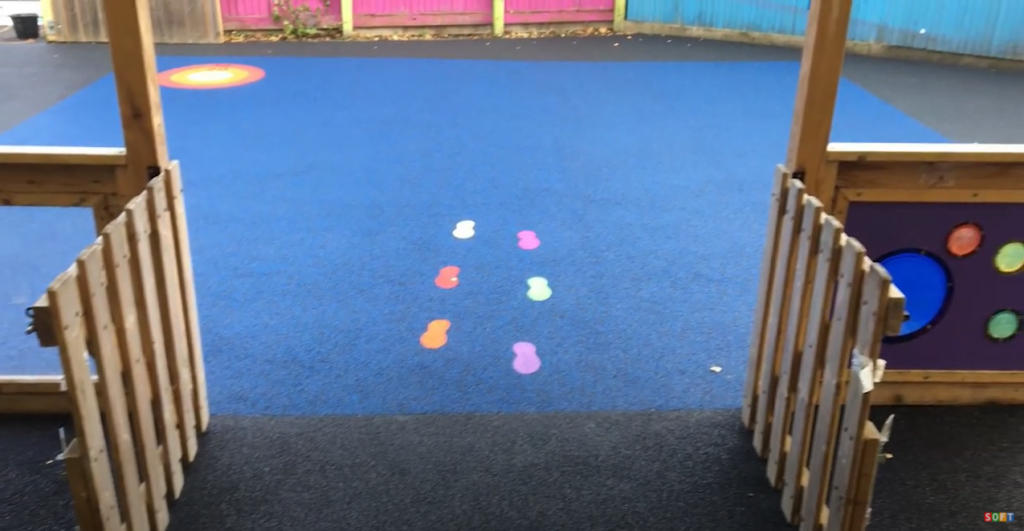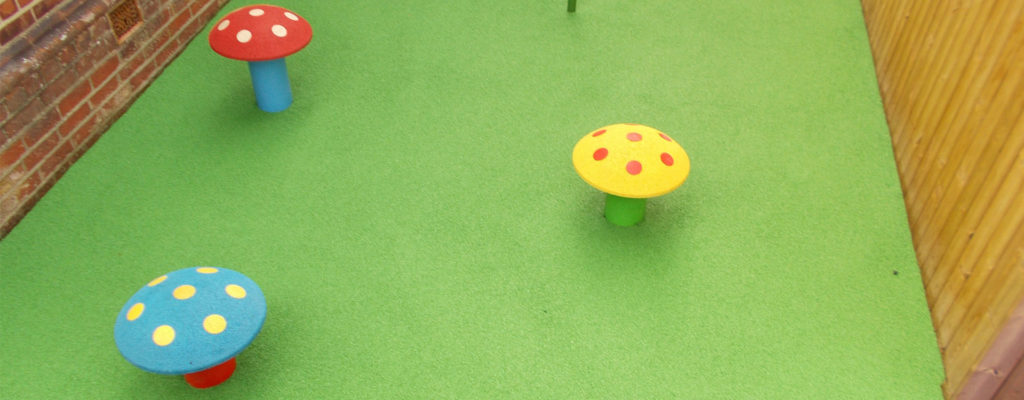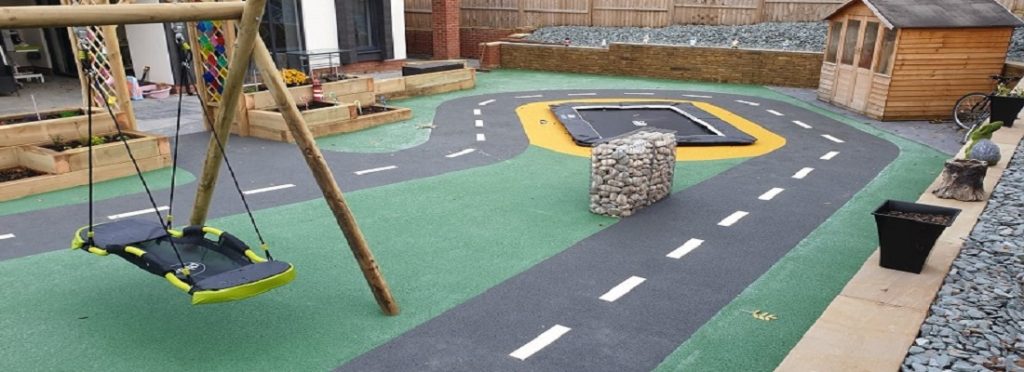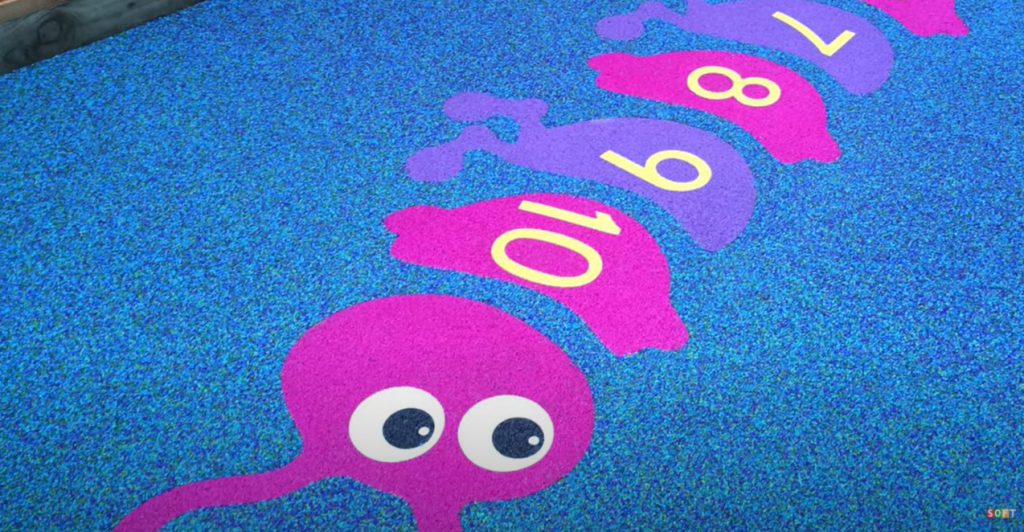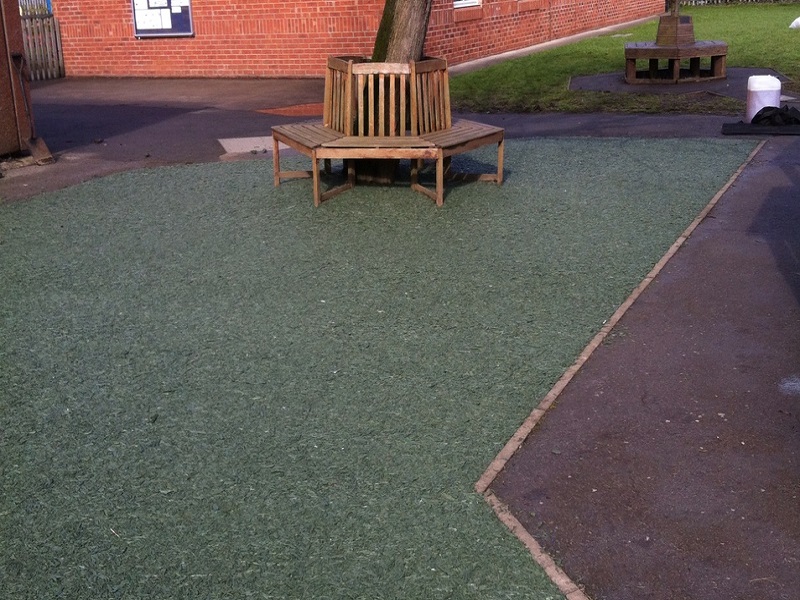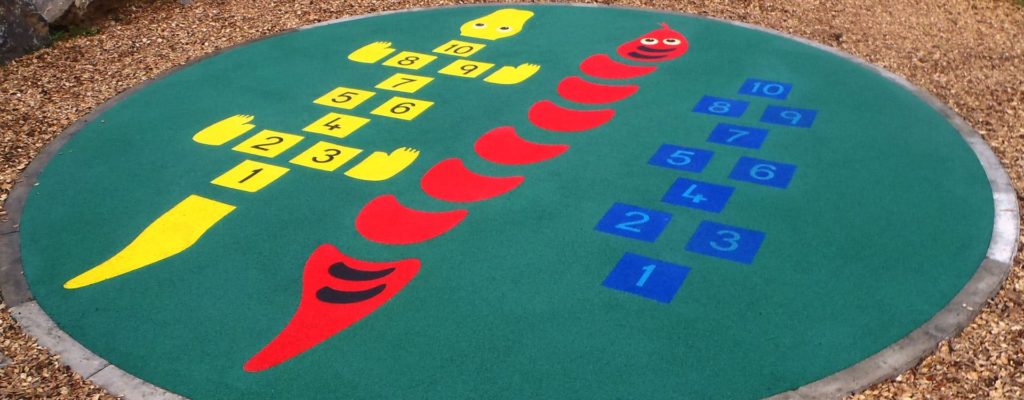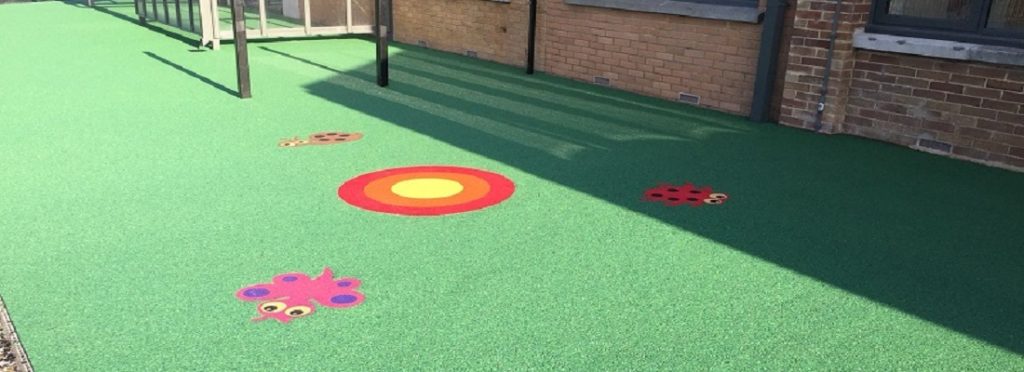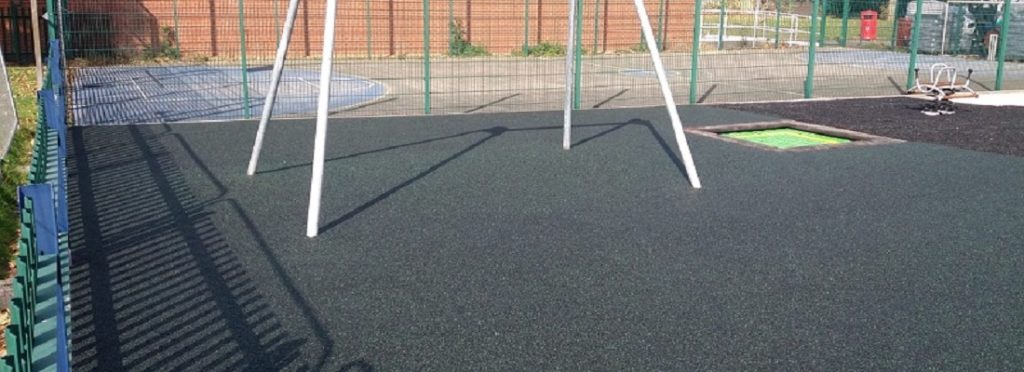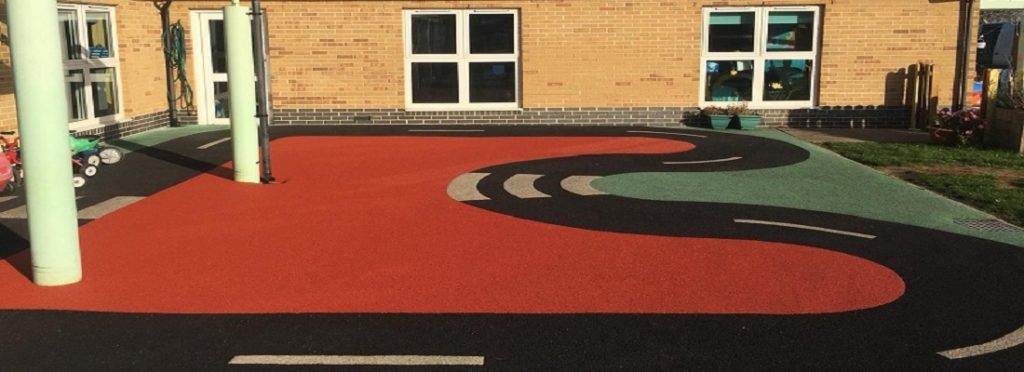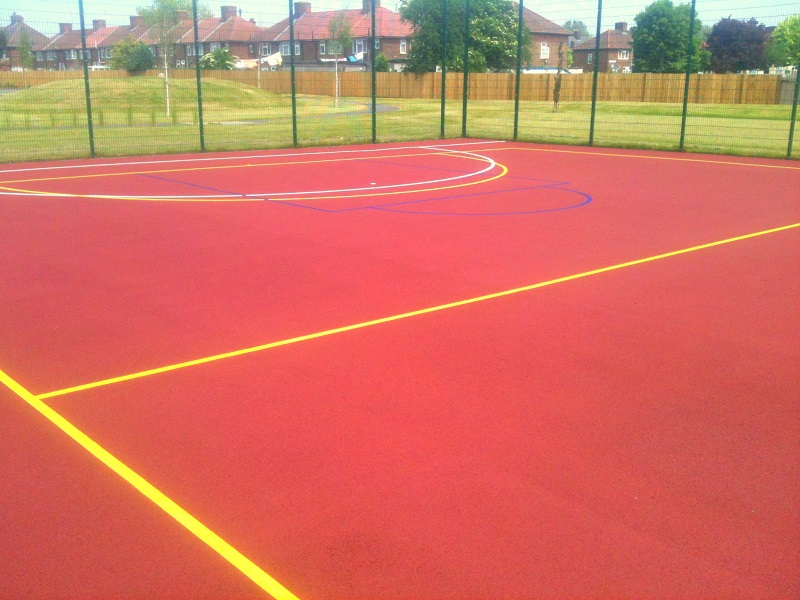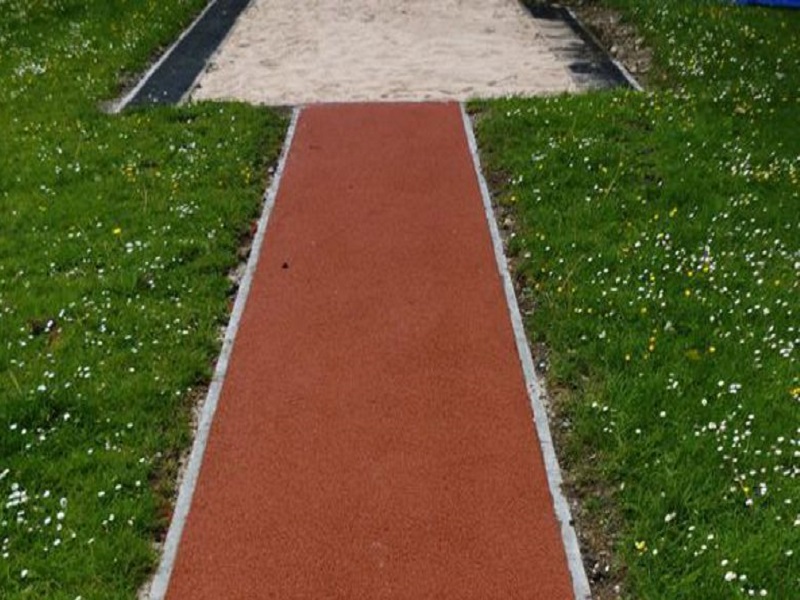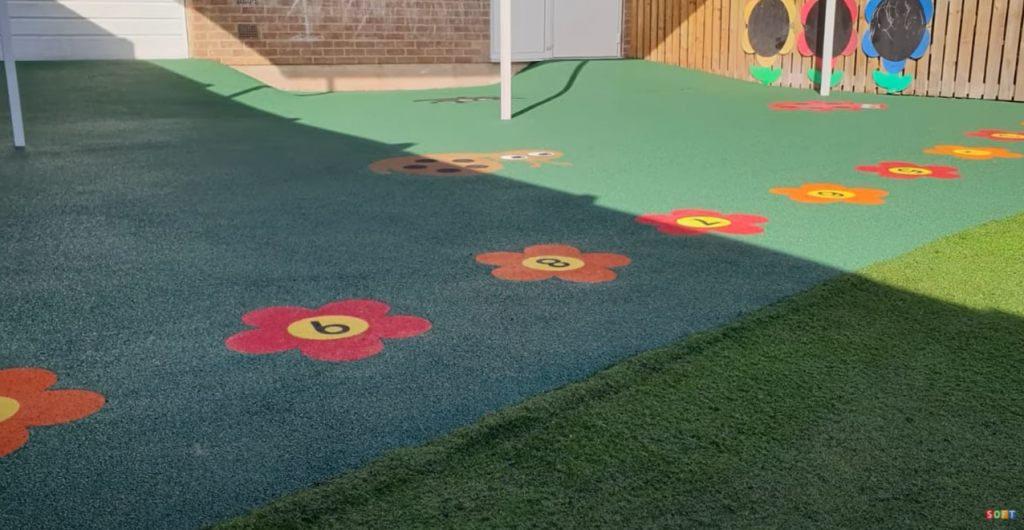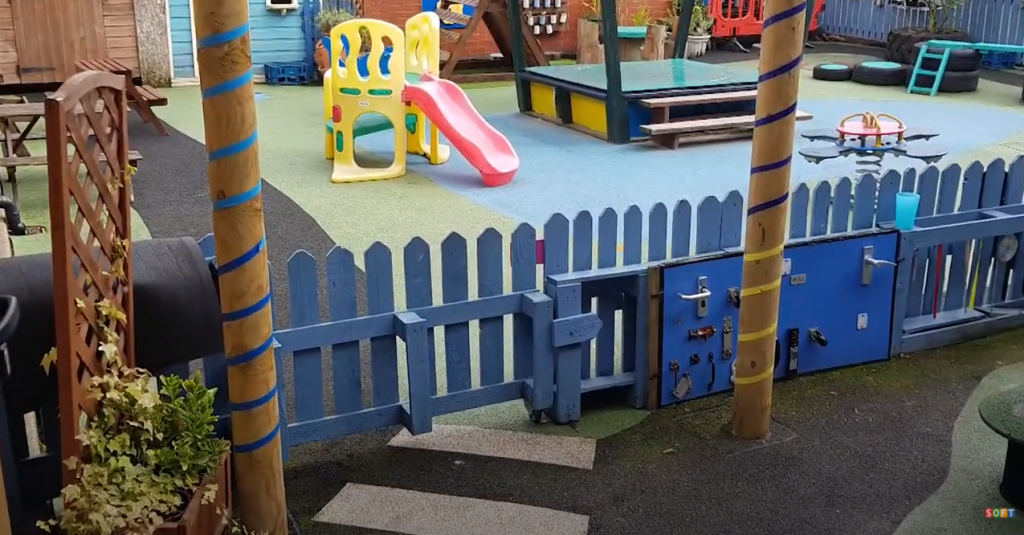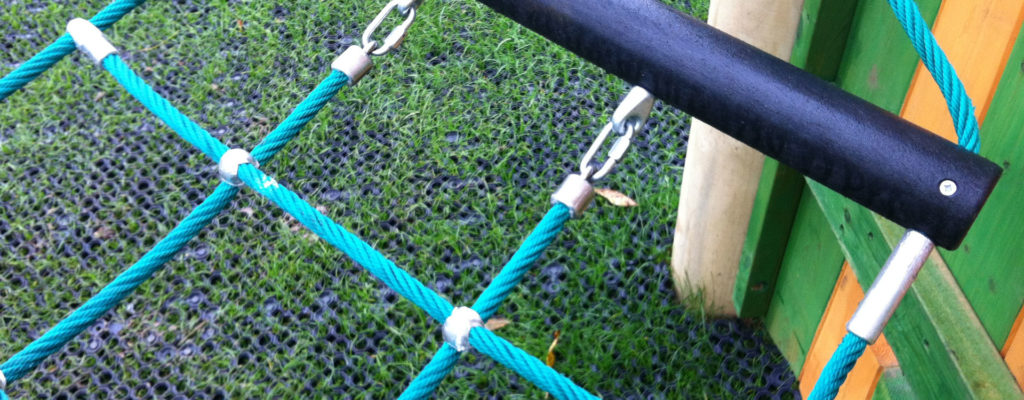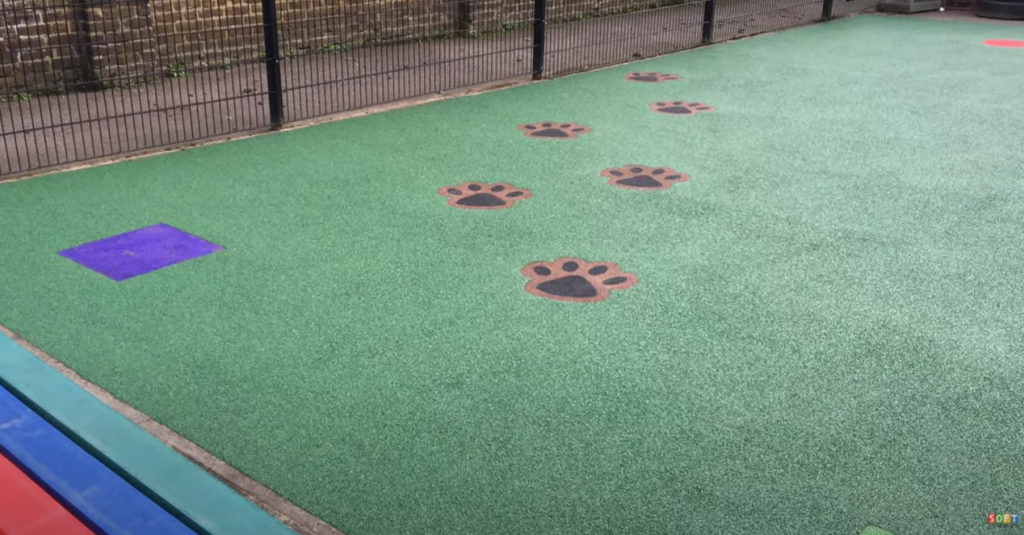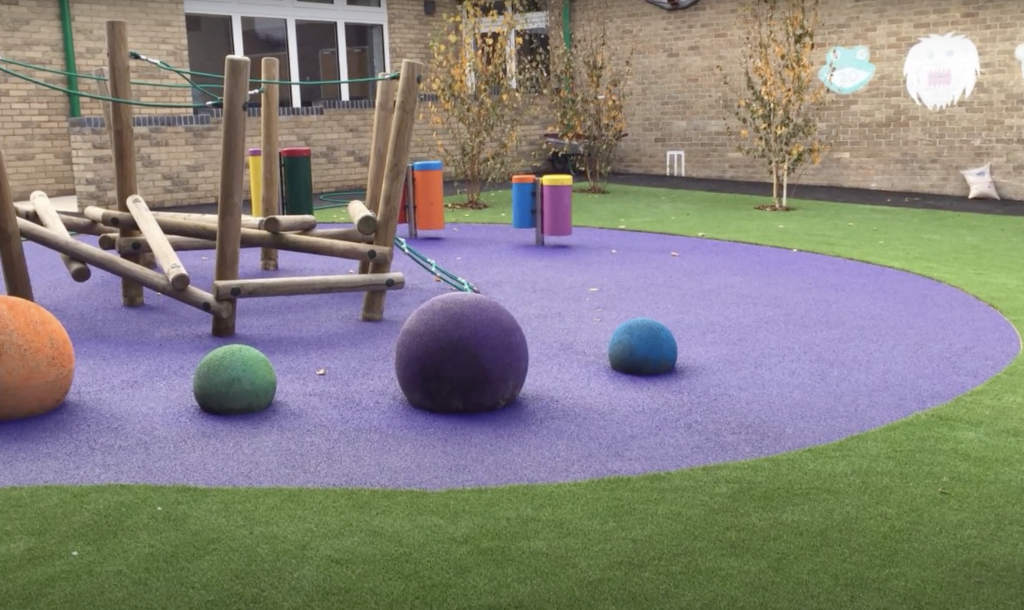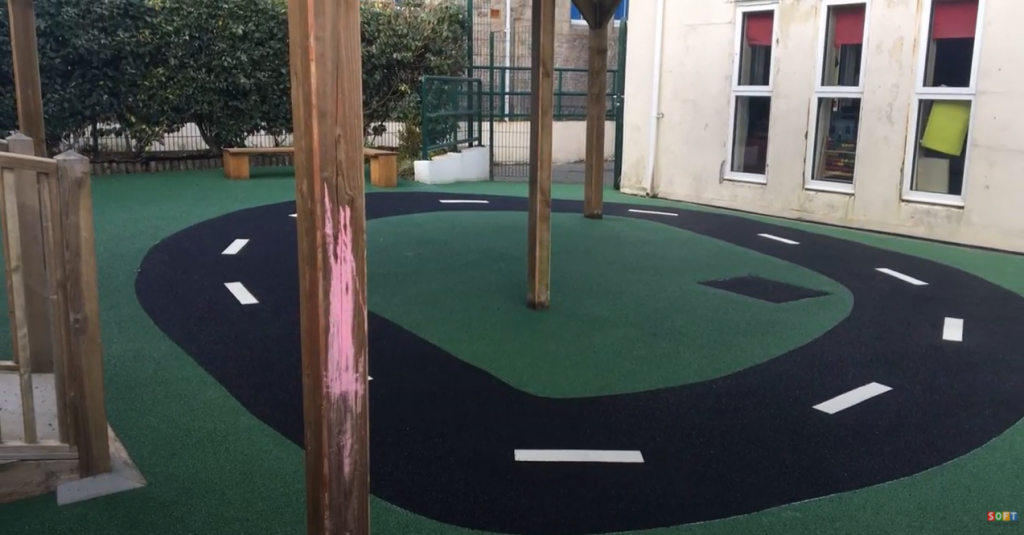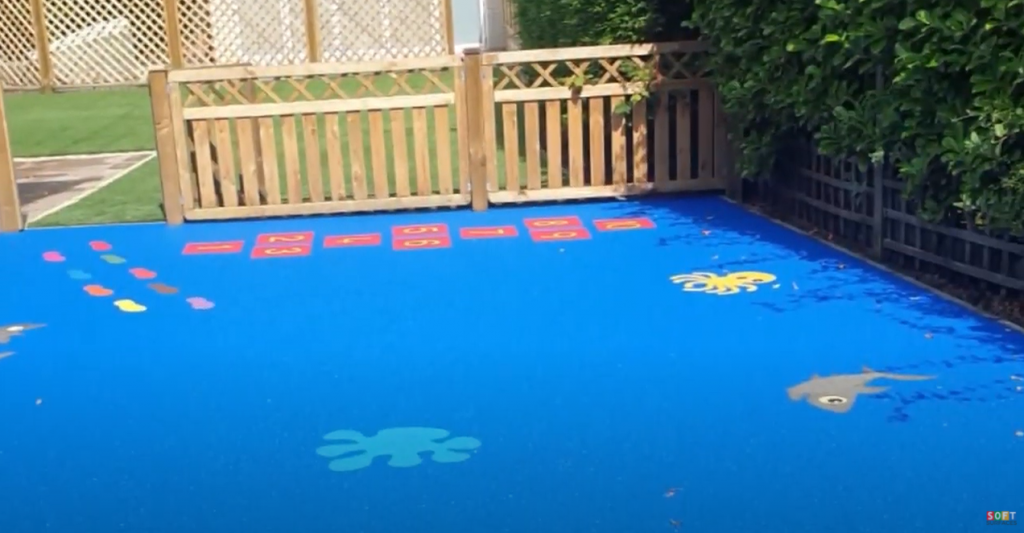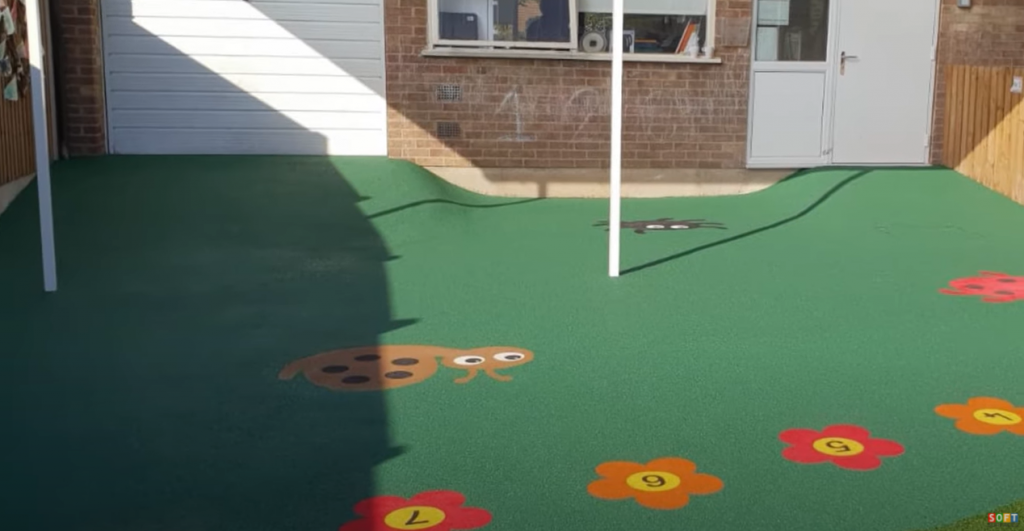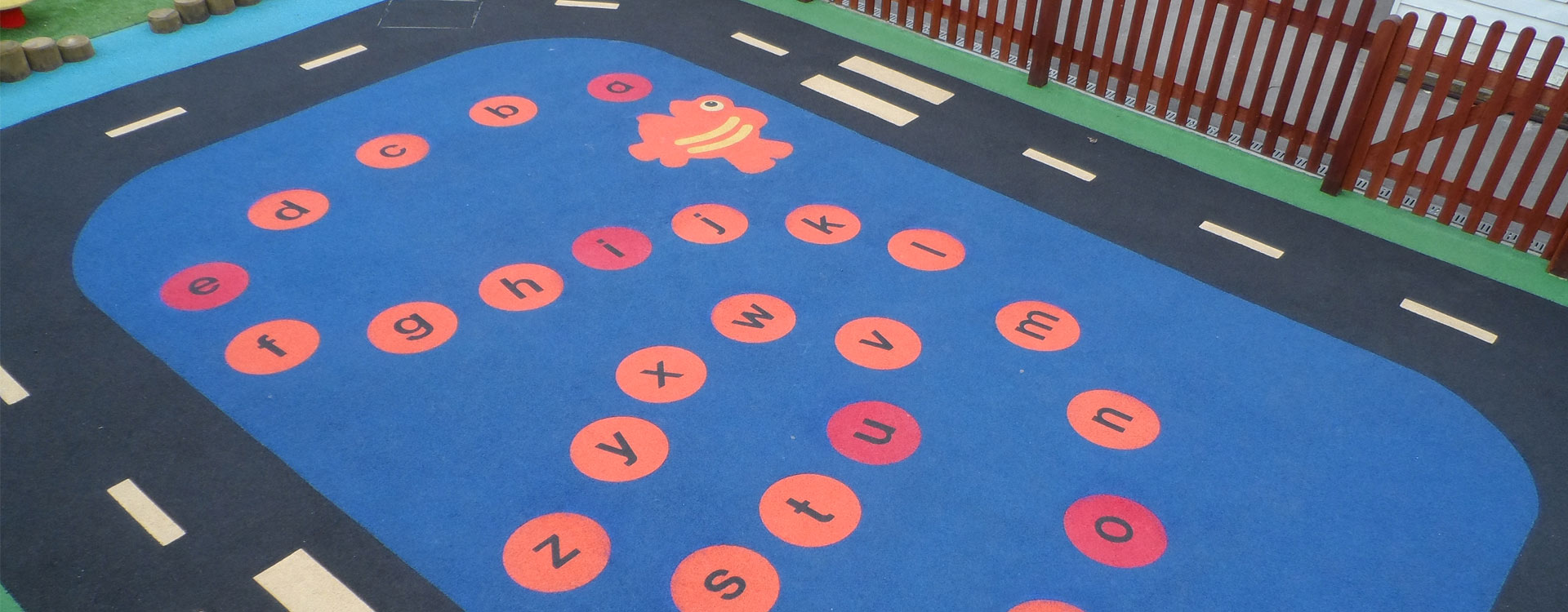
The way in which children explore and play should never be restricted – as the way in which each and every child develops and learns is different! One way for kids of all ages to creatively express themselves and learn more about how the world around them works is to take part in sensory play.
Our senses are extremely important to us – sight, smell, touch, taste, sound – and the best in children’s sensory playground designs help youngsters to explore and understand these feelings in fun and exciting ways from an early age. Check out our post on school play equipment as well if you are interested in a broader range of products.
Sensory play equipment can vary from something as simple as sand and water play installations to contraptions and gadgets that can be spun and pulled and dragged along. Sensory toys can also allow children to explore the feel of different materials and textures, as well as different sounds and sights – music and art help children to develop keen visual and audial tendencies, and encouraging play and creativity in these stakes from an early age is always recommended.
It’s now easier than ever to build a wholly or majority sensory playground – which can be easily supervised and which is safe to use in all weathers. View this list of ideas for sensory play activities to get more information.
Sensory Playground Equipment
Sensory playground equipment available in all shapes and sizes is designed and built with safety and fun in mind. These are the two main facets of all good playground equipment, but sensory play goes that little bit further. Here are some of the most common features:
- Timber musical instruments
- Water trays
- Creative boards for tracing and drawing
- Wacky mirrors
- Sliding sandboxes
- Rainwheels
- Outdoor percussion
These all give children the opportunity to try out the toys and ideas that fascinate them the most.
Many children’s sensory playground designs try to incorporate as many different senses as possible – which is why we think it is a great idea to look at music, art and creative sculpture (or as close to it as possible with mud and sand!) as part of the perfect collection of toys and games. There are many types of SEN playground equipment which you could incorporate for those with Special Educational Needs.
Play sculptures, frames and totems are creatively built with imaginations in mind – from animal shapes to outdoor puzzles and activity units, kids will make of these toys and features whatever they want to! There are loads of ways to maximise existing play equipment or incorporate new features into the current space.
The whole point of offering a range of sensory toys and equipment to children is to allow them to explore ideas and concepts that spring to mind. There are no rights or wrongs when it comes to sensory and creative play – only that children should be encouraged to be as imaginative as possible!
EYFS Sensory Play Activities
The EYFS, or Early Years Foundation Stage, helps to set the standards for teaching and encouraging children of a preschool and school-entry age. EYFS sensory play activities are encouraged to help youngsters understand the world around them through each and every play.
Tactile environments, toys and games will allow kids to explore and play with different shapes and textures without instruction – this equipment is designed to be enjoyed by very young children who are keen to discover everything around them.
The EYFS also observes creative play and expressive art development, and many standards can overlap – which means that, whether as part of a preschool playground or safe learning centre for children of a young age, you can easily build and offer an exciting arena of games and toys that encourage confidence, creativity and curiosity.
None of these should ever be held back – and these toys are designed to help develop them as early on in development as possible. There are plenty of benefits of sensory play for children of all ages.
Curiosity and creativity are essential facets of development into later childhood and adulthood. Being able to creatively solve problems and possessing the confidence to explore is not only healthy, it’s essential – and there is no better way to introduce children to these concepts than through exciting and colourful toys and games that can be enjoyed all year round.
Inclusive Playground Games and Features
Inclusive playground games and features will allow children of all ages and abilities to come together and explore the sensory world. Equipment provided to EYFS standard will allow differently-abled children to have fun, be creative and be curious as much as anyone else, and as such, it’s never been easier to put together a safe and inclusive environment for pre-schoolers and school starters alike.
You can even implement activities for children with dyspraxia and other physical conditions. These can focus on developing balance and coordination skills.
Many sensory playground ideas and equipment can be enjoyed by pupils of varying abilities. Encouraging inclusivity in a play setting will further encourage themes of teamwork and inclusivity in the way children develop and behave.
Playgrounds should be open to all and should be available for children to enjoy no matter what. Children’s sensory playground designs, featuring textures to feel, levers to pull, mirror to marvel at and more can be enjoyed by all. Check out this page to see more on the different play area designs we offer.
Early Years Sensory Play Areas
We all learn from touching and hearing and looking – and early years sensory play areas encourage children to explore all of this at their own pace. Supervision is always recommended, but these toys and games can be explored and enjoyed with little instruction or encouragement. Introducing these types of play areas to children, where they can learn more about different sounds, textures and colours, is a great way to allow them to embrace more of the world around them at their own pace.
Very young kids will invariably learn more effectively through their own exploration. Too young perhaps for classroom instruction, our formative years are largely explorative and, as such, it makes perfect sense to offer children the chance to get out there and investigate to their hearts’ content.
Exploring, creating and discovering is great fun – and sensory play environments are the perfect way to enable kids to let loose and find out what appeals to them. Have a look at some of our top school playground designs to get some ideas.
- 4 Ideas for Teaching Organisation on the Playground
- 4 Reasons Why Schools Have Artificial Grass
- Activities to Teach Kindness on the Playground
- All Weather Surface Children’s Playground Safety Flooring
- Artificial Grass and Rubber Mulch Surfacing in Derby, Derbyshire
- Artificial Grass and Wetpour Pathway Installation at a School in Birmingham
- Artificial Grass and Wetpour Roadway Construction in Liverpool
- Benefits of a Mud Kitchen for a School Playground
- Benefits of Climbing in Primary School
- Benefits of Sensory Activities for Individuals With Autism
- Bespoke Playground Surfacing With Graphics in Northampton
- Best Playground Equipment for Primary Schools
- Black Wetpour & Artificial Turf Construction at a Nursery in Harlow, Essex
- Black Wetpour Flooring Construction in Canterbury
- Children’s Play Area Flooring
- Children’s Sensory Playground Designs
- Colourful Play Area Surfacing in Sheffield, South Yorkshire
- Colourful Playground Flooring Design in Cardiff, Wales
- Colourful Rubber Playground Flooring in Wakefield, West Yorkshire
- Colourful Rubber Playground Flooring Installation in Wakefield
- Colourful UK Playground Surfacing in Bedfordshire
- Cooperative Play Ideas for Kids
- Costs of Schools Playground Safety Surfaces
- Creating a Storytelling Area in Your Playground
- Day Care Playground Safety Flooring in Stoke, Staffordshire
- Den Building Ideas for Schools
- Early Years Outdoor Play
- Educational Play Designs
- Educational Playground Surface Installation in Brighton
- Educational Playground Surface Installation in Brighton, East Sussex
- Encouraging Risk Taking in Outdoor Play
- EPDM Rubber Play Area Flooring in Luton
- EPDM Rubber Play Area Flooring in Luton, Bedfordshire
- EPDM Rubber Play Area Surfacing in Leeds, West Yorkshire
- EPDM Rubber Wetpour Flooring in Newcastle, Tyne and Wear
- EPDM/SBR Rubber Surfacing Playground Flooring
- Expressive Arts Playground Ideas
- How Do I Apply for Grant Funds for a Play Area in the UK?
- How Do Wet Pour Repair Kits Work
- How Playing Outside Can Reduce Stress and Anxiety
- How to Encourage Phonics Learning on the Playground
- How to Prepare Your Playground for Winter
- How to Refresh Your School Playground
- Imaginative Play Ideas for Kids
- Impact Attenuating Playground Surfacing
- Improving Children’s Mental Health With Play
- Inclusive Playground Equipment for Schools
- Independent Learning Activities for Kids
- Lap, Leap, Neap Play Area
- Large Wetpour Play Area Surface in Stockport
- LEAP Local Equipped Area for Play
- Learning Through Play – Psychology and Theories
- Managing Behaviour Through Active Outdoor Play
- NEAP Neighbourhood Equipped Area for Play
- Needlepunch Playground Construction in Kilmarnock
- Nursery EPDM Rubber Surfacing in Wolverhampton
- Nursery Play Area Maintenance
- Nursery Play Area Surfacing
- Nursery Playground Installation
- Nursery School Green Wetpour Overlay in Gloucester
- Ofsted Requirements for Outdoor Play
- Outdoor Maths Games for Children
- Outdoor Nursery School Surfacing in Preston
- Outdoor Nursery School Surfacing in Preston Lancashire
- Outdoor Play Area Ideas for Kids
- Outdoor Play Ideas for Children With Dyscalculia
- Outdoor Playground Roadway Design
- Outdoor Safety Flooring Designs
- Outdoor Wetpour Surfacing Install in Leicester
- Play Area Line Marking Specification
- Play Area Maintenance
- Play Area Surfaces
- Playground Activities for the National Curriculum
- Playground Designs for Sensory Processing Disorder
- Playground Equipment for Schools
- Playground Fencing
- Playground Flooring Repair in Birmingham, West Midlands
- Playground Games for Children With Dyspraxia
- Playground Games to Encourage Speech Development
- Playground Grass Mats Safer Flooring
- Playground Marking Graphics
- Playground Markings
- Playground Safety Surface Construction in Reading, Berkshire
- Playground Safety Surfacing with Graphics in Shropshire
- Playground Surface HIC Safety Flooring
- Playground Surfacing in Hertfordshire
- Playground Surfacing Options
- Playground Wet Pour Flooring in Northamptonshire
- Playground Wet Pour Flooring in Northumberland
- Playground Wet Pour Flooring in Nottinghamshire
- Playground Wet Pour Flooring in Oxfordshire
- Playground Wet Pour Flooring in Somerset
- Poured in Place Rubber Bouncy Playground Surfaces
- Pre School Play Area Surfacing in Wigan, Greater Manchester
- Pre-School Play Area Surfacing in Wigan
- Primary School Outdoor Classroom Funding Grants
- Protective Playground Flooring
- PS4 Activity Games Space Area in Penrith
- Q26 – Wetpour Playground Safety Surfacing
- Rubber Outdoor External Playground Flooring
- Rubber Playground and Artificial Grass Surfacing in Middlesbrough
- Rubber Playground Surface Construction
- Rubber Spheres Play Equipment
- Rubber Tarmac Flooring
- Rubber Tarmac School Outdoor Playground Flooring
- Safety Surfaces For Playgrounds
- Sand and Water Play Activities for Kids
- School Adventure Trail Designs
- School All Weather MUGA Pitches
- School Athletics Track Designs
- School Playground Design and Install in Manchester
- School Playground Graphics
- School Playground Groundworks
- School Playground Ideas
- School Playground Maintenance
- School Playground Marking Designs
- School Playground Surfacing
- Schools Recreational Long Jump Runway Length
- SEN Playground Equipment for Schools
- Small nursery EPDM Rubber Surfacing in Wolverhampton
- Soft Fall Impact Absorbing Playground Surface
- Spongy Nursery School Surfacing in Carlisle
- Spongy Playground Flooring Construction in Woking, Surrey
- Spongy playground flooring construction that we carried out in Woking, Surrey
- Spongy Safer Pour Surfacing for Playgrounds
- Tests for Playground Safety Flooring
- Top 3 Safety Surfaces for Playgrounds
- Top 5 School Playground Trends
- Wet Pour Surfacing and Synthetic Turf Construction in Worthing, Sussex
- Wetpour Flooring & Graphics Installation in Bristol
- Wetpour Playground with Graphics in Salford, Greater Manchester
- Wetpour Safety Flooring with Graphics at a Nursery in Cheltenham, Gloucestershire
- What Is Critical Fall Height?
Children’s sensory playground designs come in various shapes and forms, and can be put together to create truly unique environments – build a unique landscape for younger children to explore and marvel at!
Sensory Play Benefits
There are a number of sensory play benefits. Please see below.
Sensory Play Helps Children Learn More Effectively
Some kids find it difficult to concentrate and take in information when sat in a classroom reading or listening. They prefer something more practical which they can physically touch, move or see working. This could be done by measuring out water jugs, building sandcastles or spelling out letters to enhance literacy skills. View this post to find out more about these activities.
There are so many different ways that children can learn through play, no matter their age or ability level. Offering a choice of sensory toys and equipment makes learning more fun and helps capture the imagination more than sitting in a classroom.
Children’s Language Skills are Improve with Sensory Play
Letter and number games can be incorporated into your playground to help children develop their communication skills. Check out our play area design page to find out more about all the different options. You could also install equipment that encourages kids to work together and communicate while playing. This all helps to improve language and promote cognitive growth in a fun and interactive way.
This Type of Play Helps Boost Memory Function
Lots of people find it easier to remember things by doing a physical action. This is the same for children who are learning fundamental skills such as times tables or phonics. Using toys or pieces of equipment often makes it easier to remember what they have learnt instead of writing it down.
Activating different areas of the brain through active sensory play also helps to boost memory function overall. Ensuring children get these opportunities from an early age can have many benefits even into adulthood. Children’s activity levels can also be boosted through this type of play to help enhance fitness.
Children with Anxiety can Benefit from Sensory Activities
Many children suffer from social issues and can find busy play areas overwhelming. Having sensory games and activities that they could play individually or in small groups can help these pupils feel more at ease. Concentrating on an activity can also help to calm a child down if they are feeling frustrated or upset. It gives them something to do with their hands or a task to focus on instead of worrying about other things.
These activities can also be beneficial to children with invisible disabilities who may find conventional play equipment difficult or inaccessible.
Kids Can Learn About the World Around Them
Activities and equipment based around the senses are great for teaching kids about everyday items and feelings. Whether it’s creating channels and watching water flow, or feeling different types of materials using an outdoor mud kitchen, there are loads of ways to teach younger pupils about the world around them.
You could also incorporate this into lessons about safety and making children aware of certain things which could be dangerous like hot or sharp objects. The same applies to messy play activities and encouraging children to make a controlled mess and then know how to clean up and tidy everything away.
Using Sensory Equipment Encourages Problem Solving
Another benefit of sensory play is that it helps develop children’s problem-solving skills from an early age. Some pieces of equipment may require a certain understanding of how they work which means children will have to work out how to play. Check out some more Early Years problem-solving ideas here.
They also might have to work together and cooperate by sharing toys or playing together. This helps boost their social interaction and creates a sense of teamwork rather than everyone playing on their own.
Get expert advice, today call us on
Get a FREE quote from our award winning team
